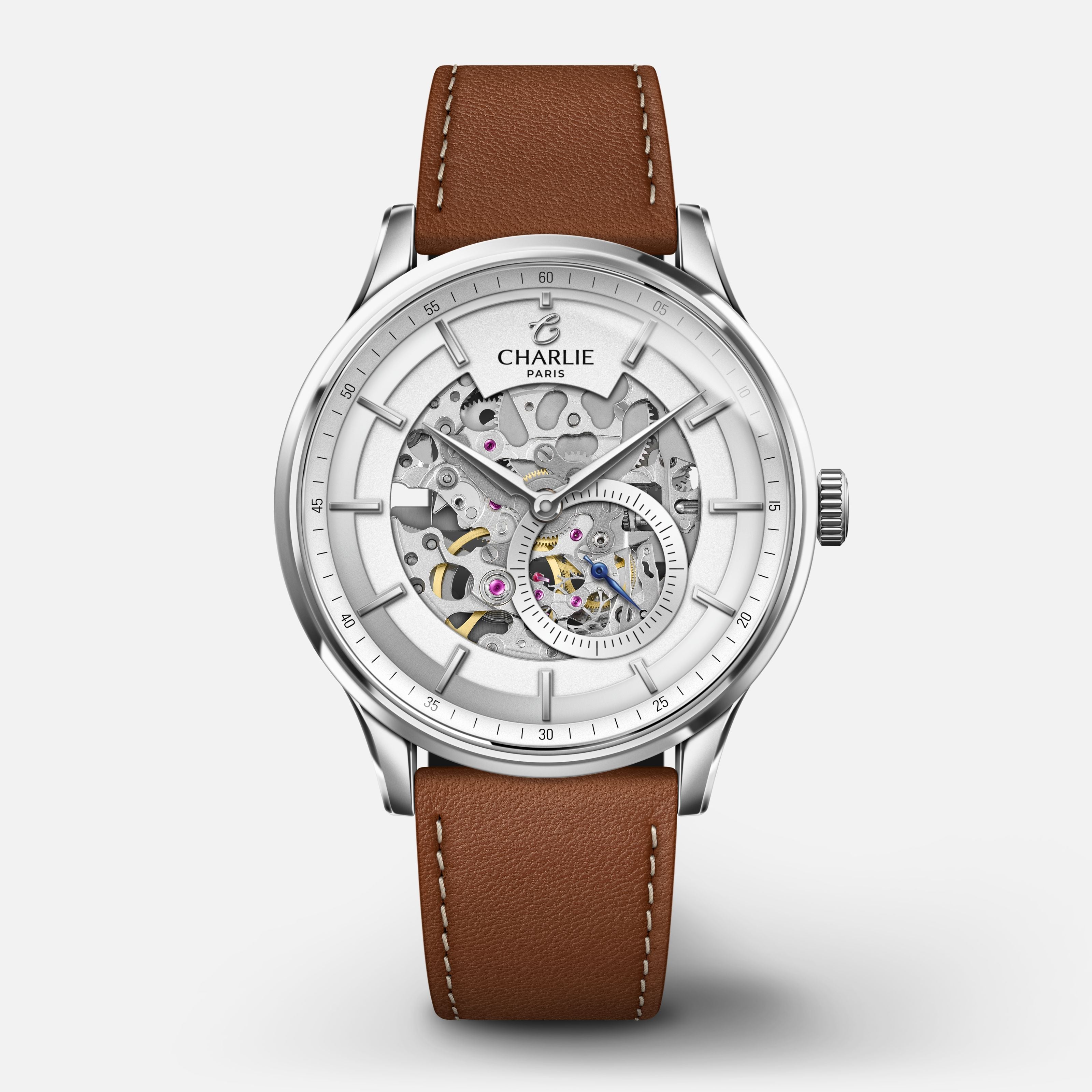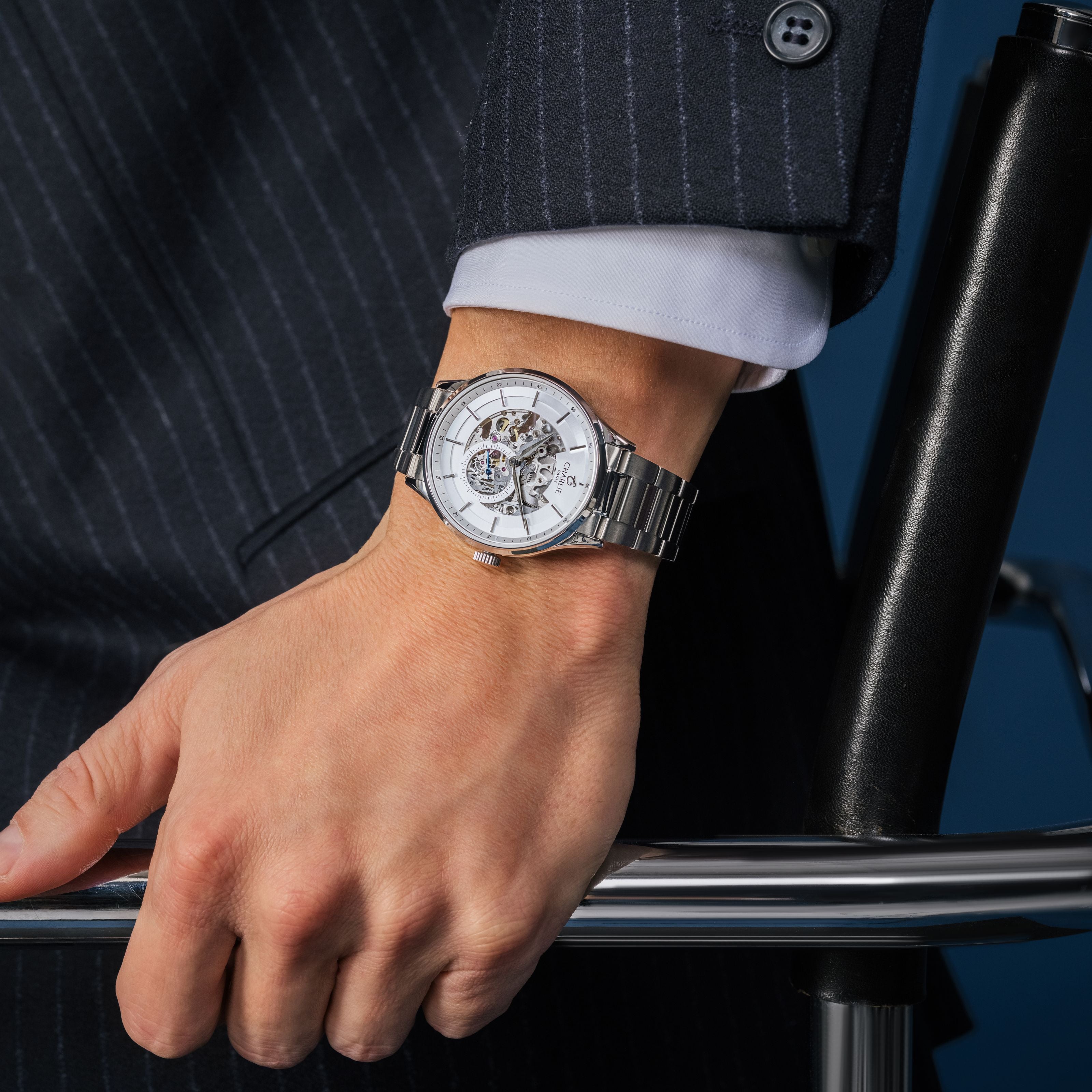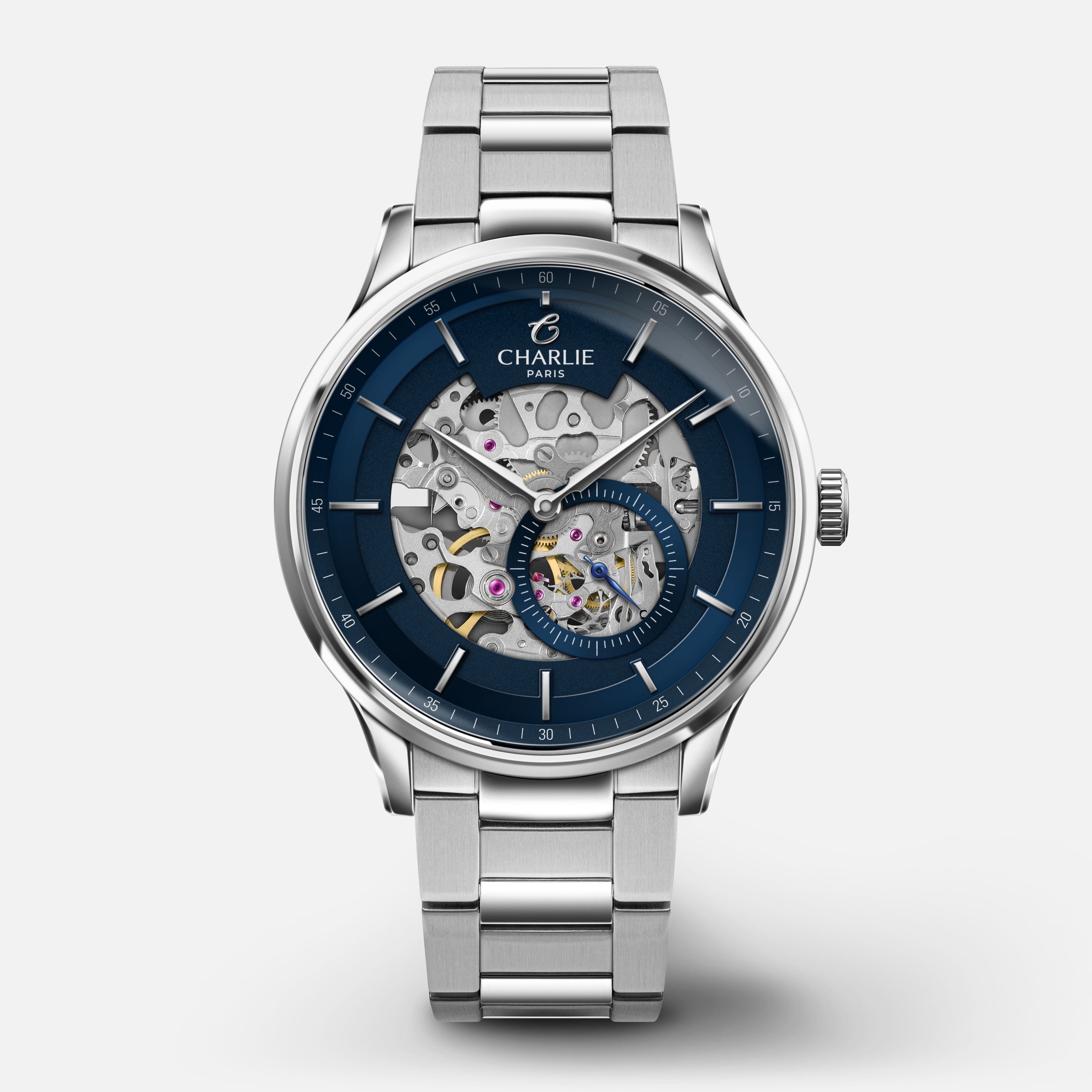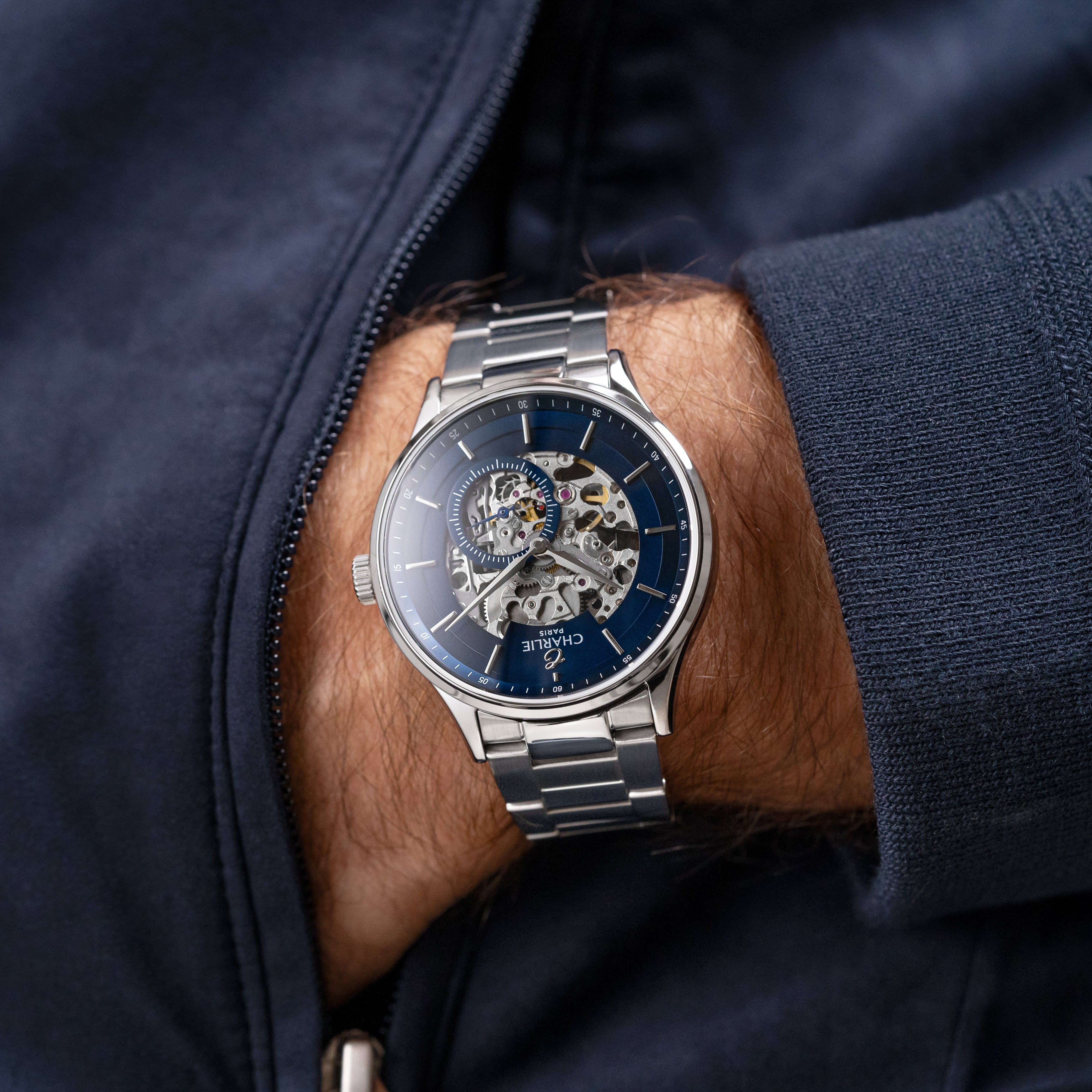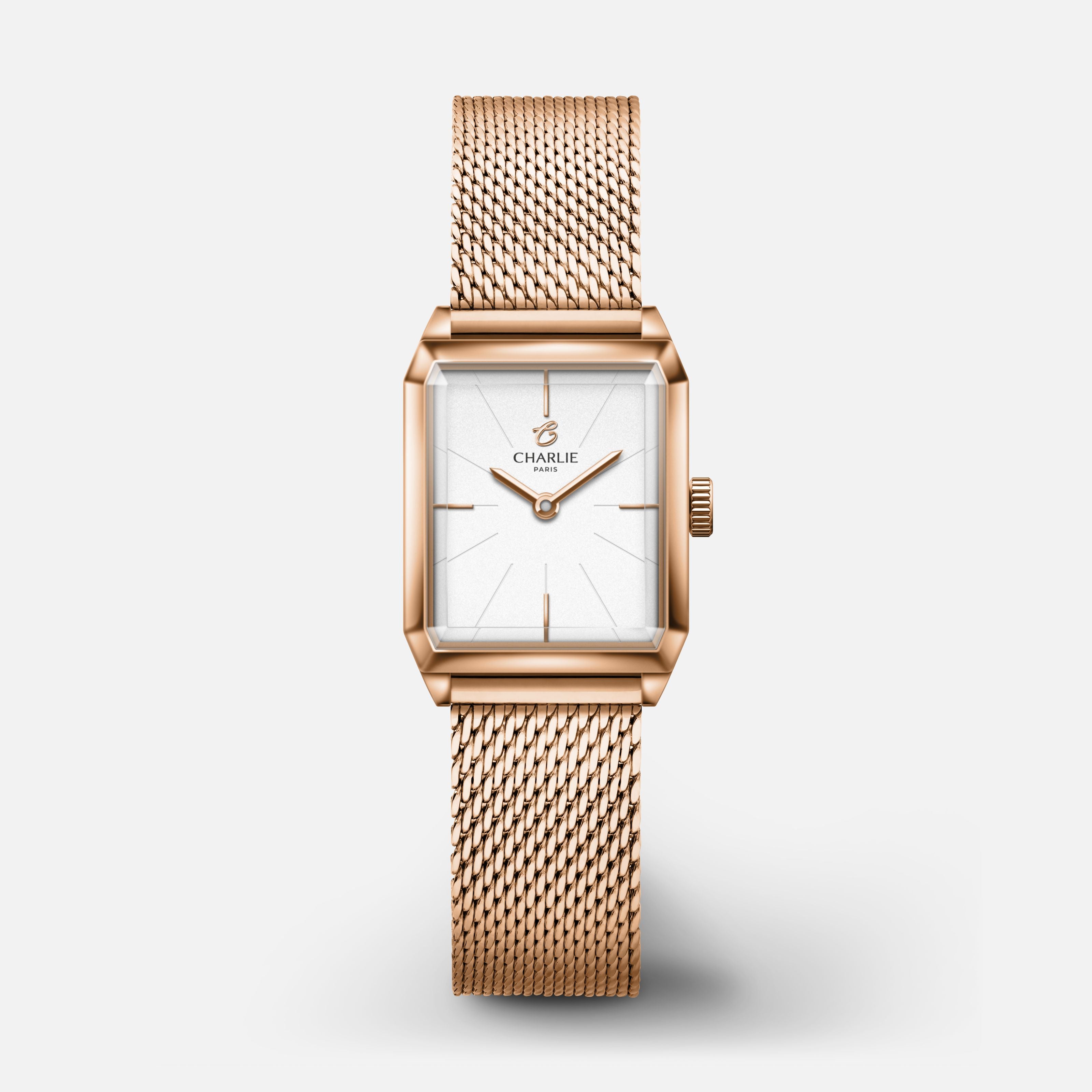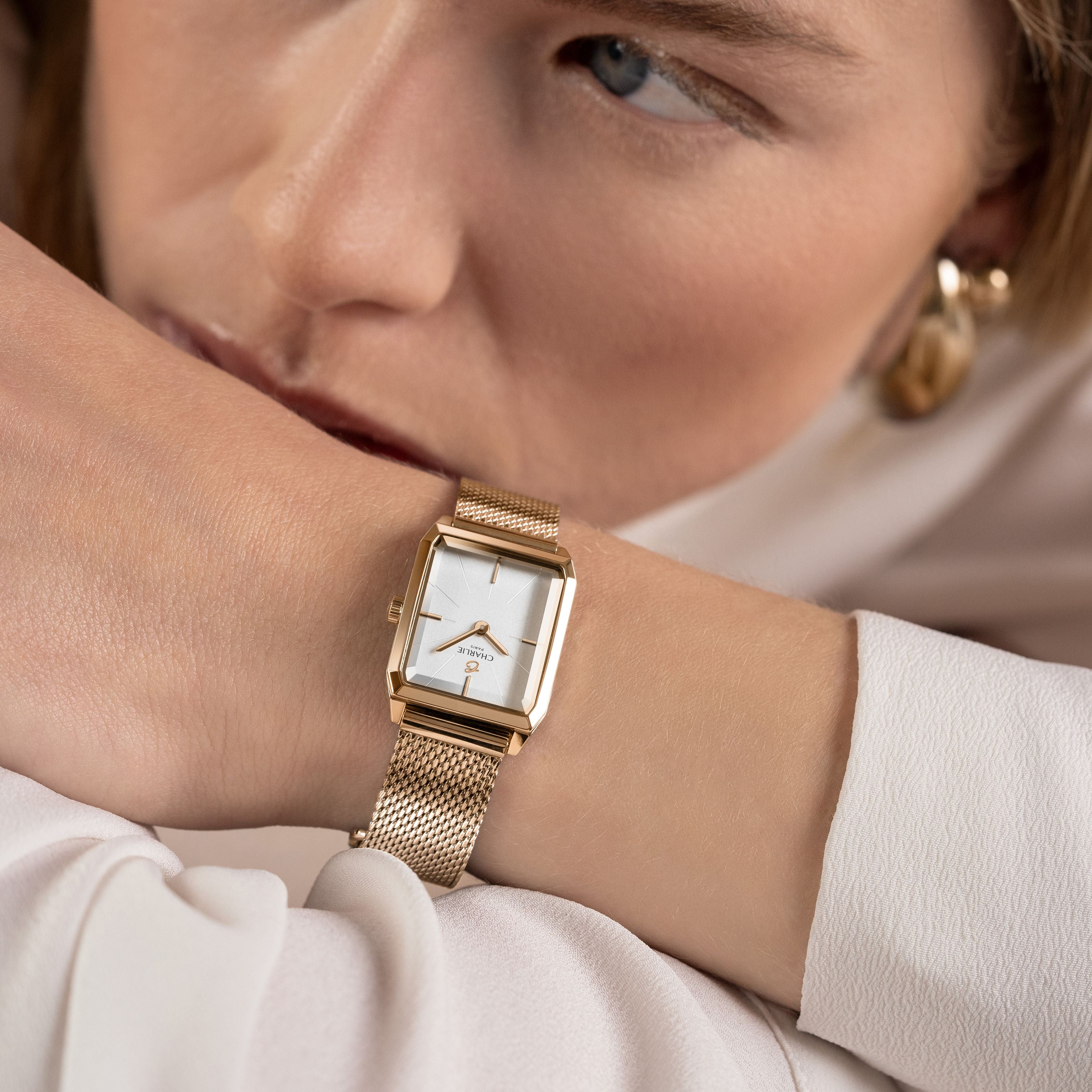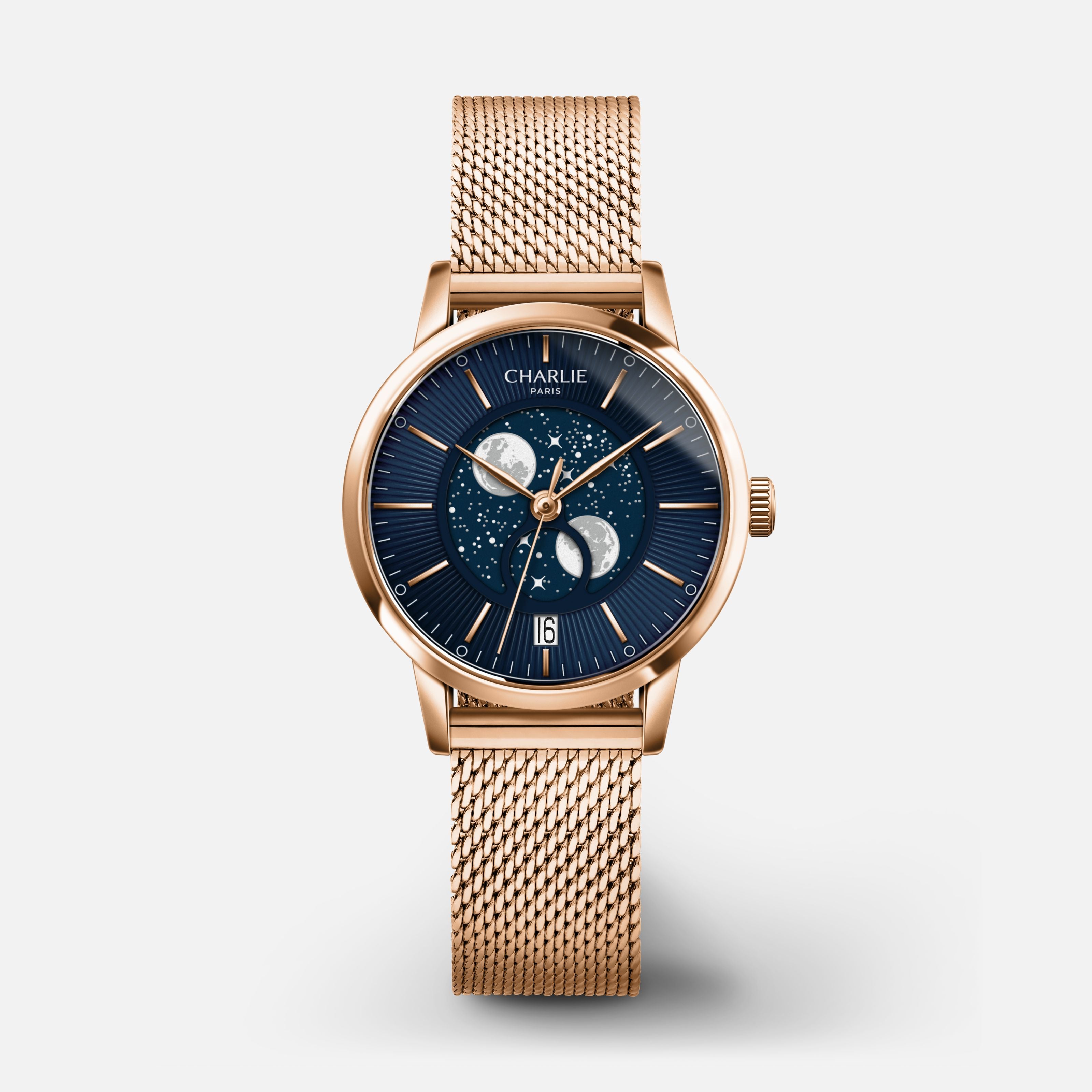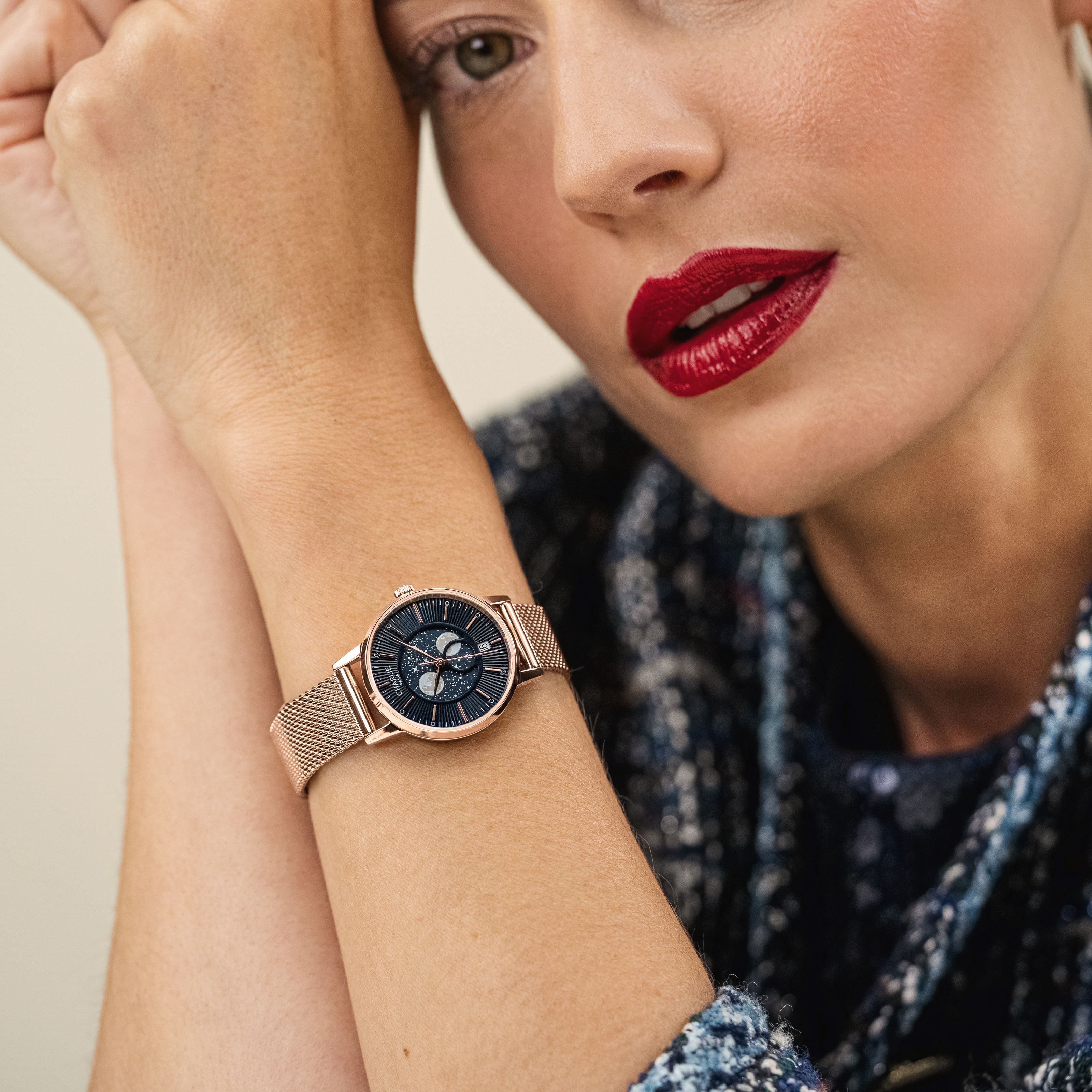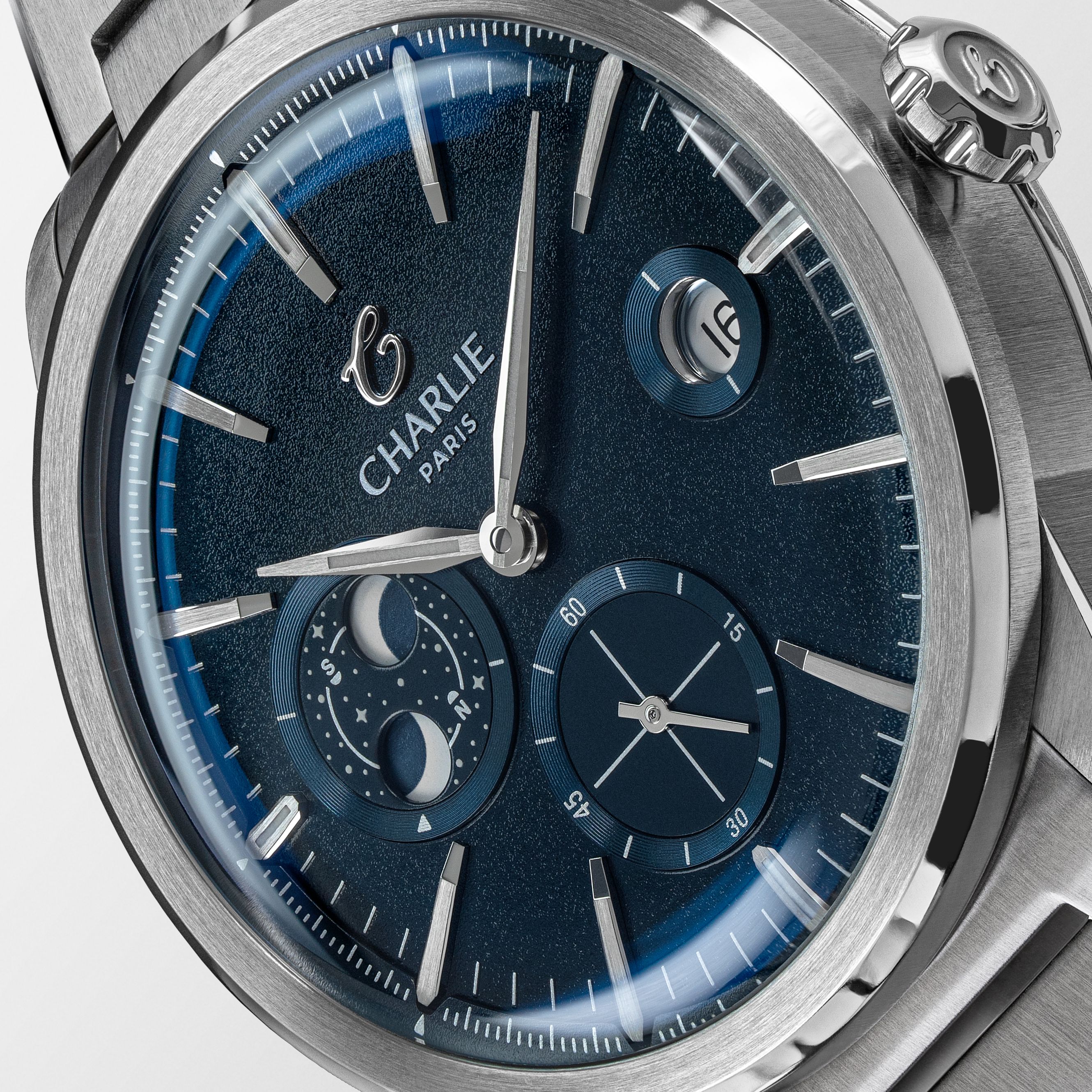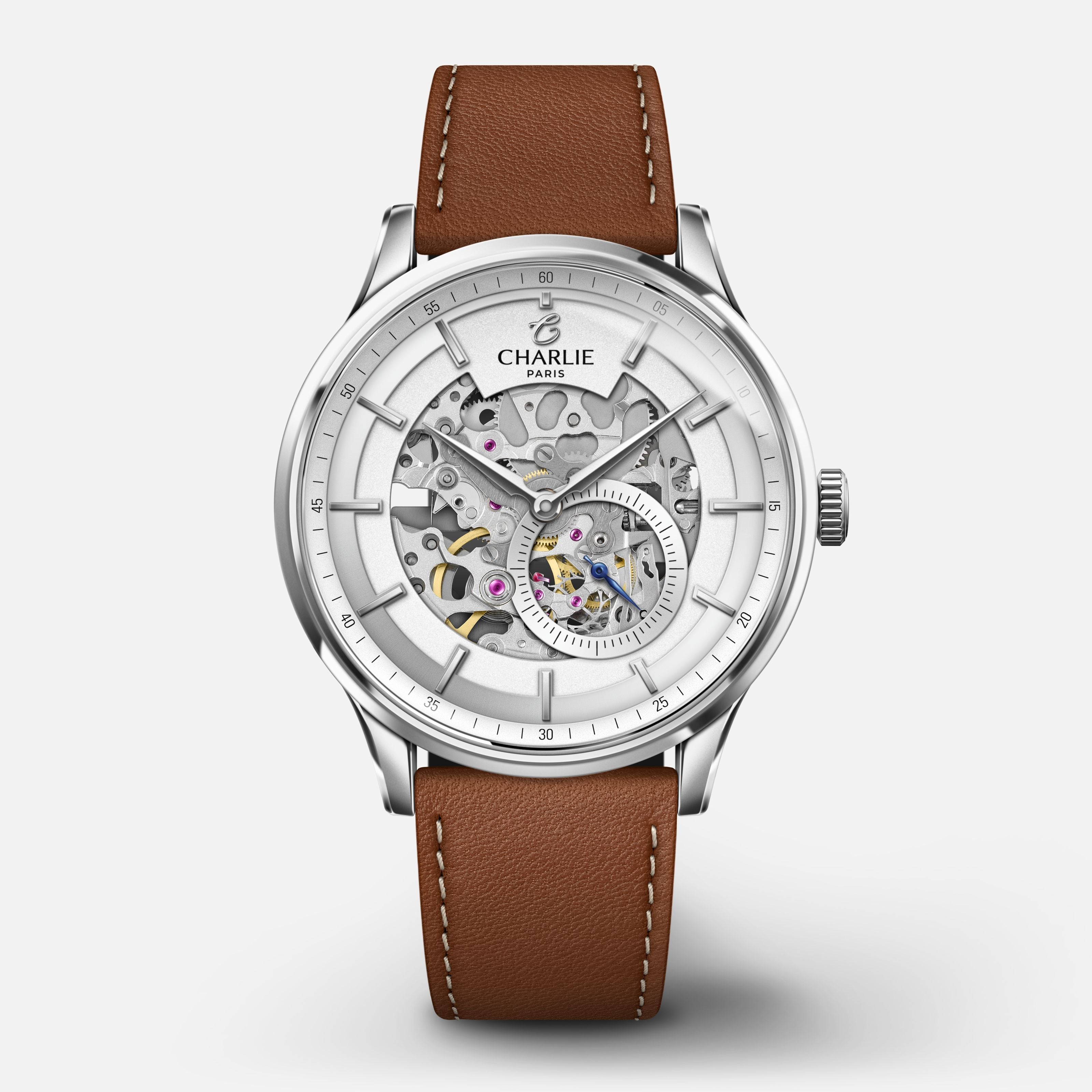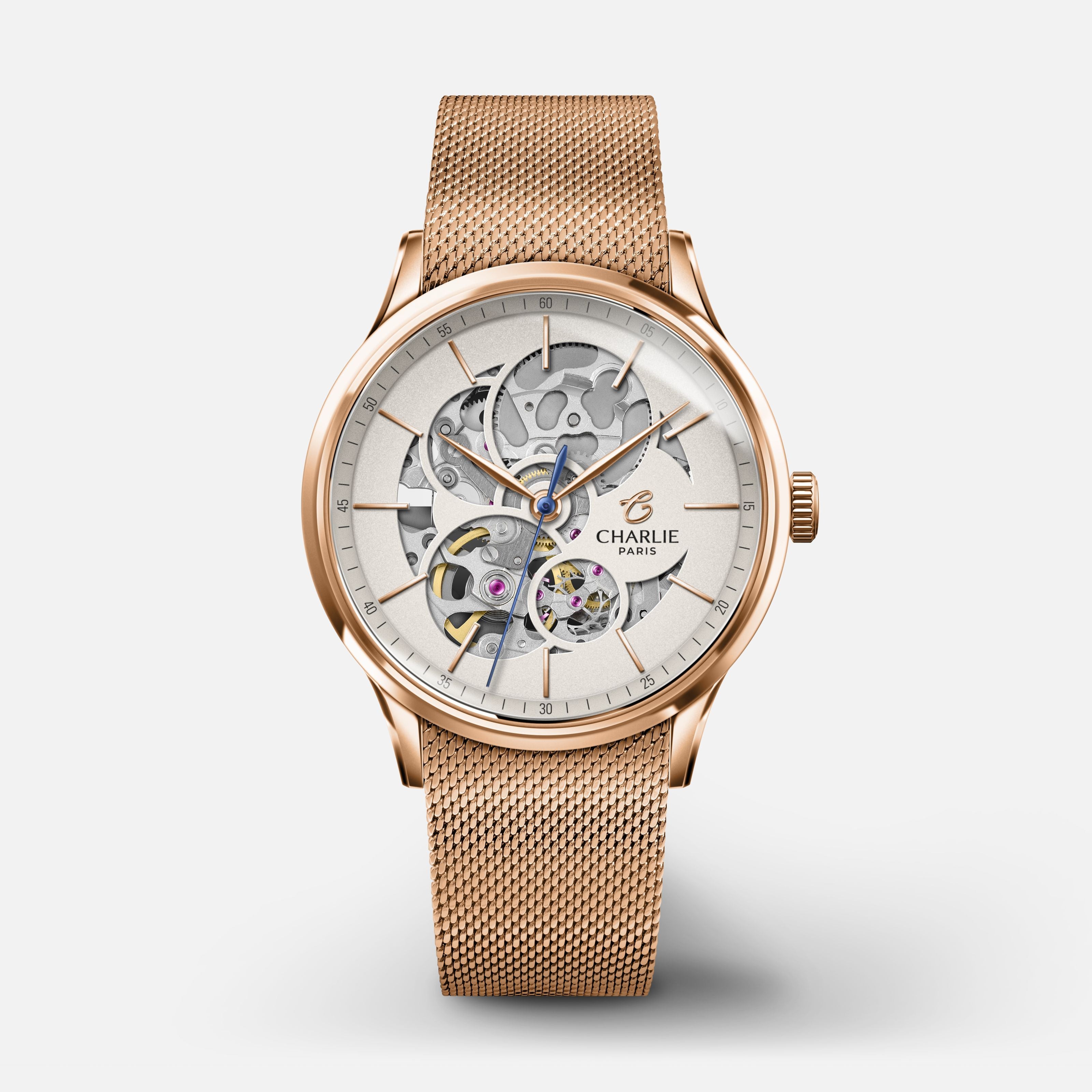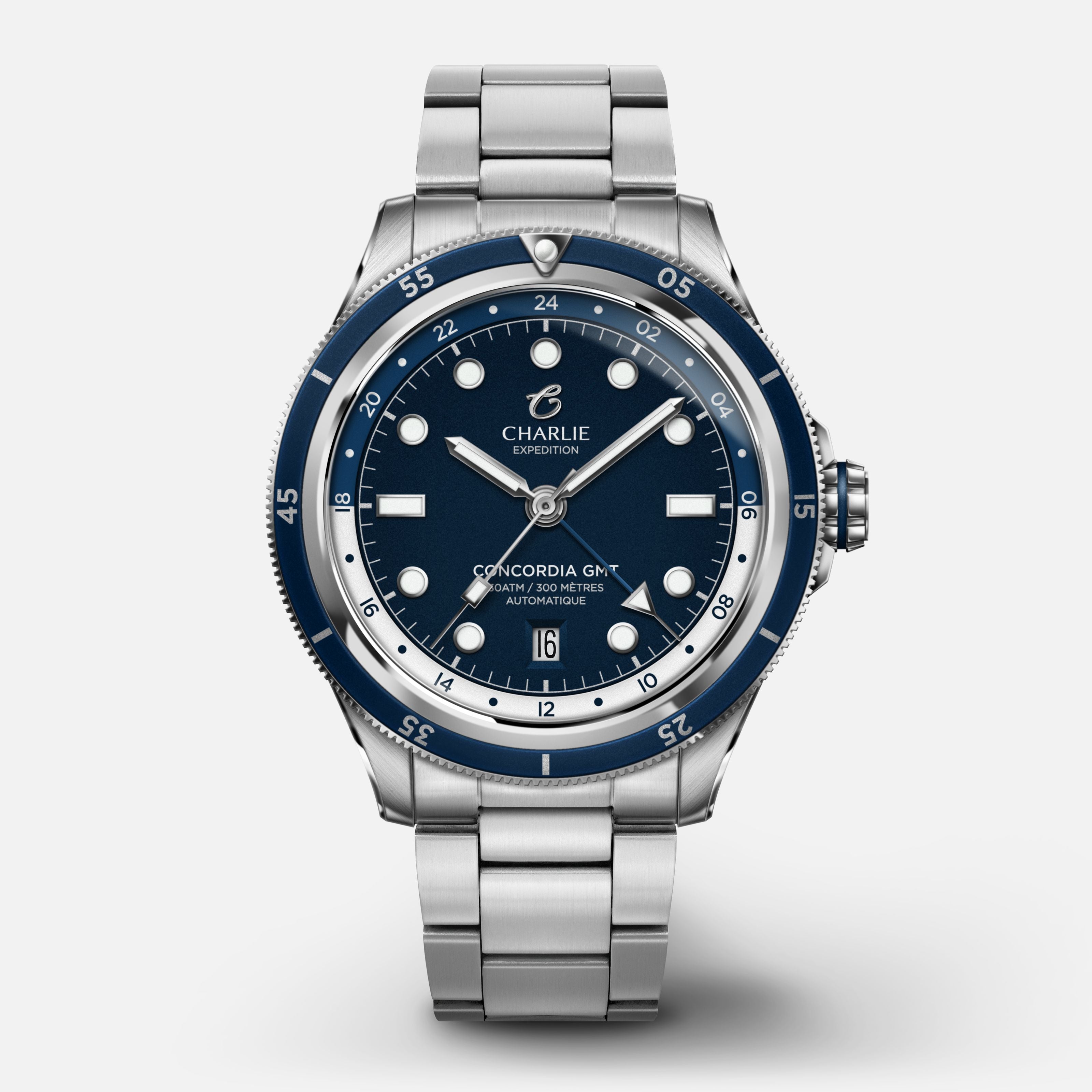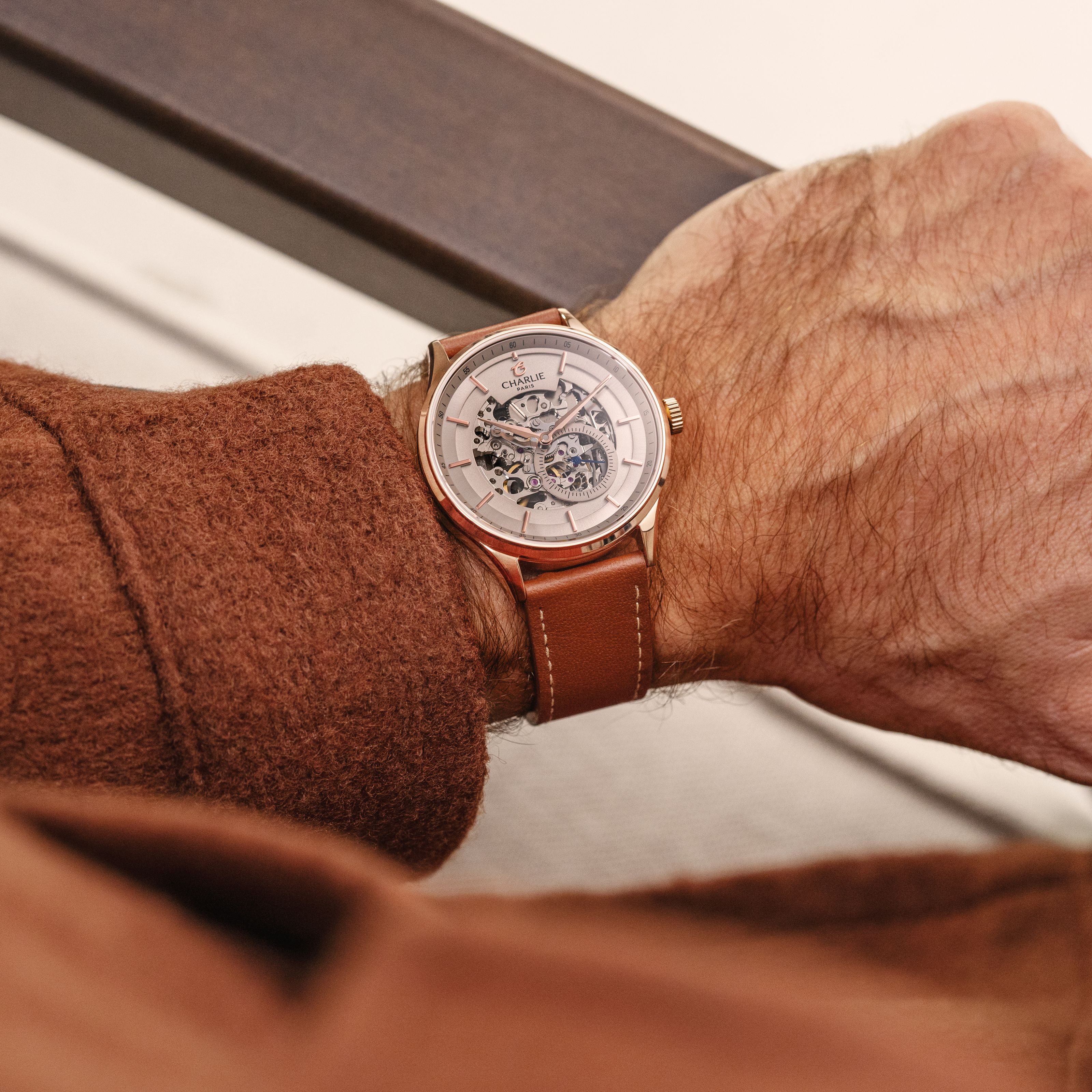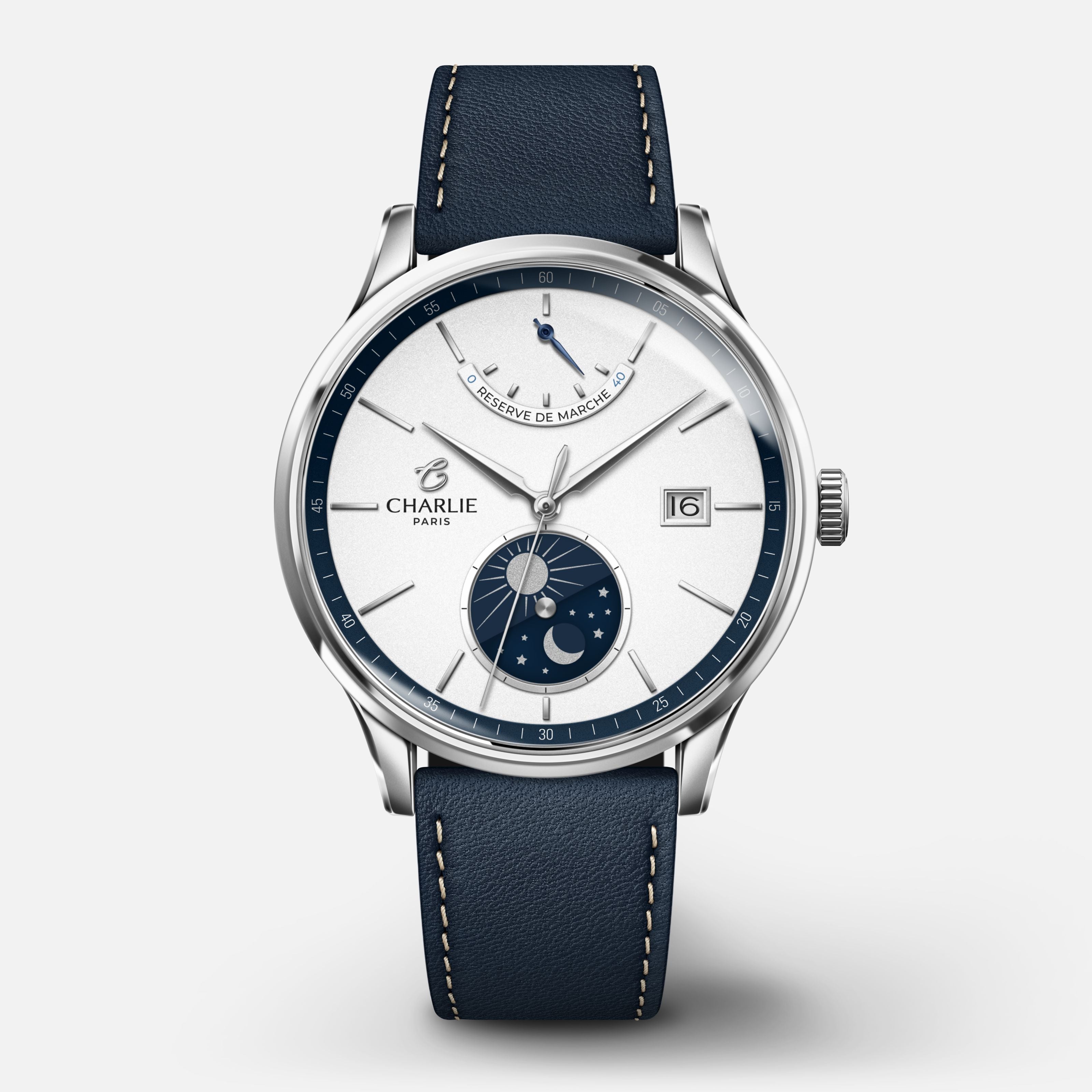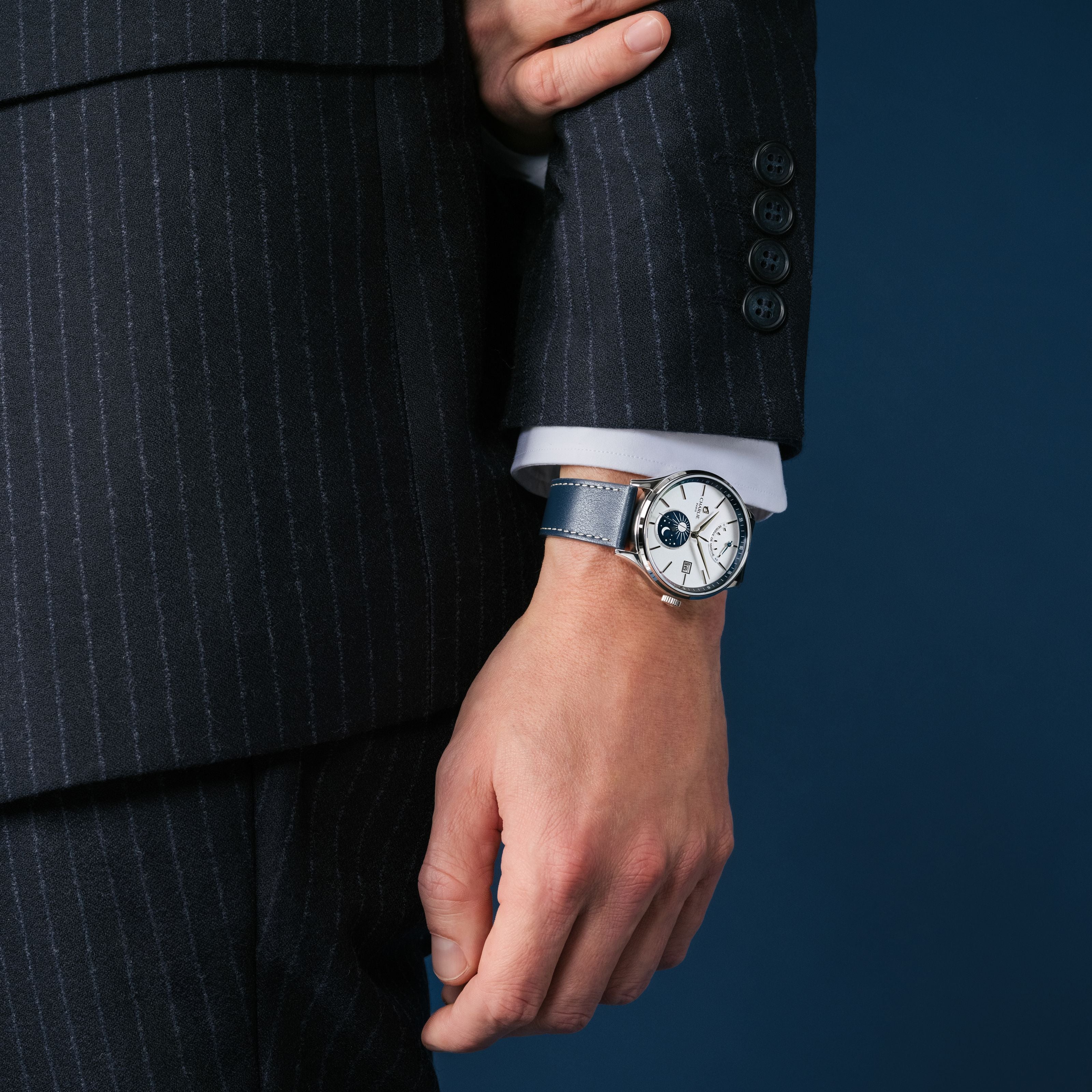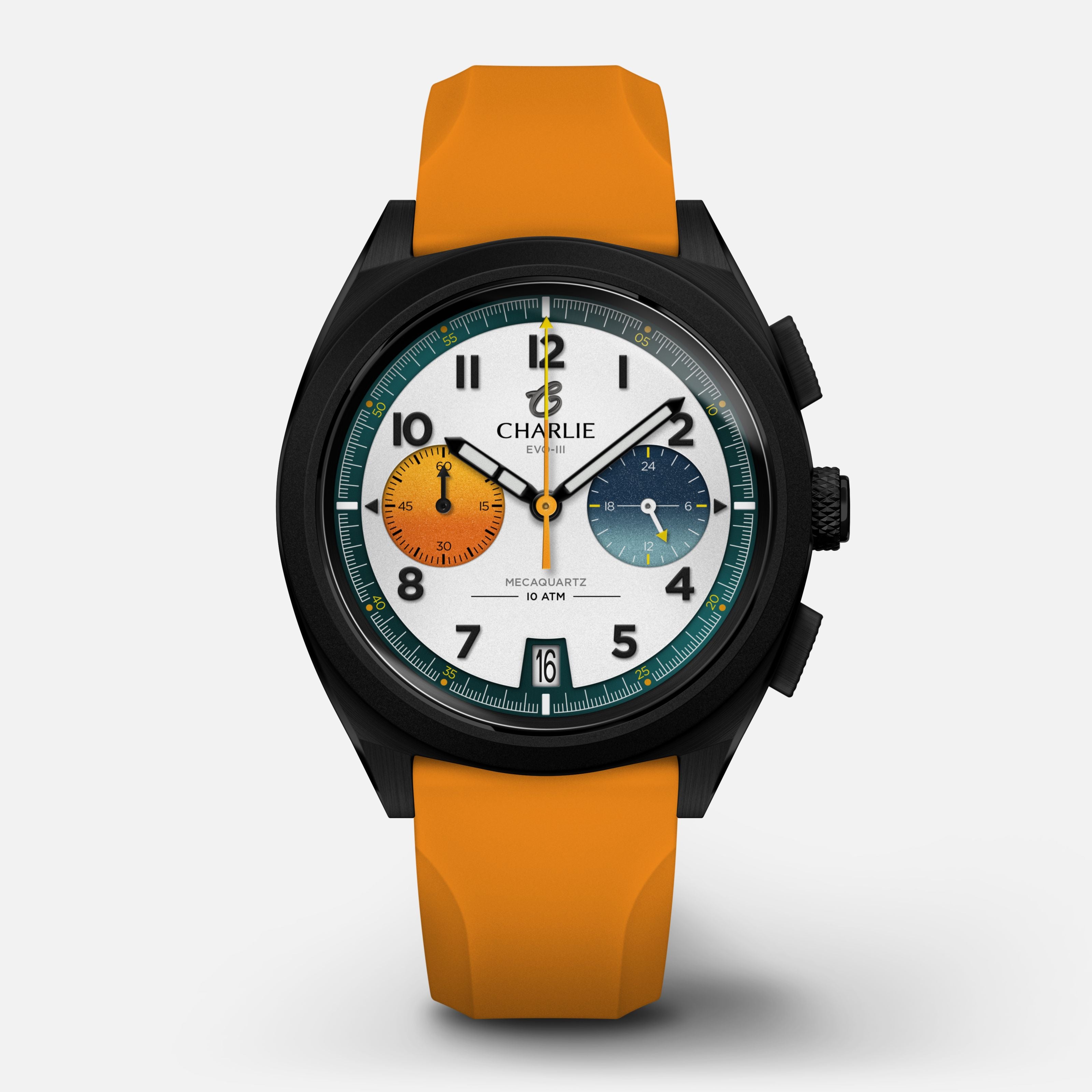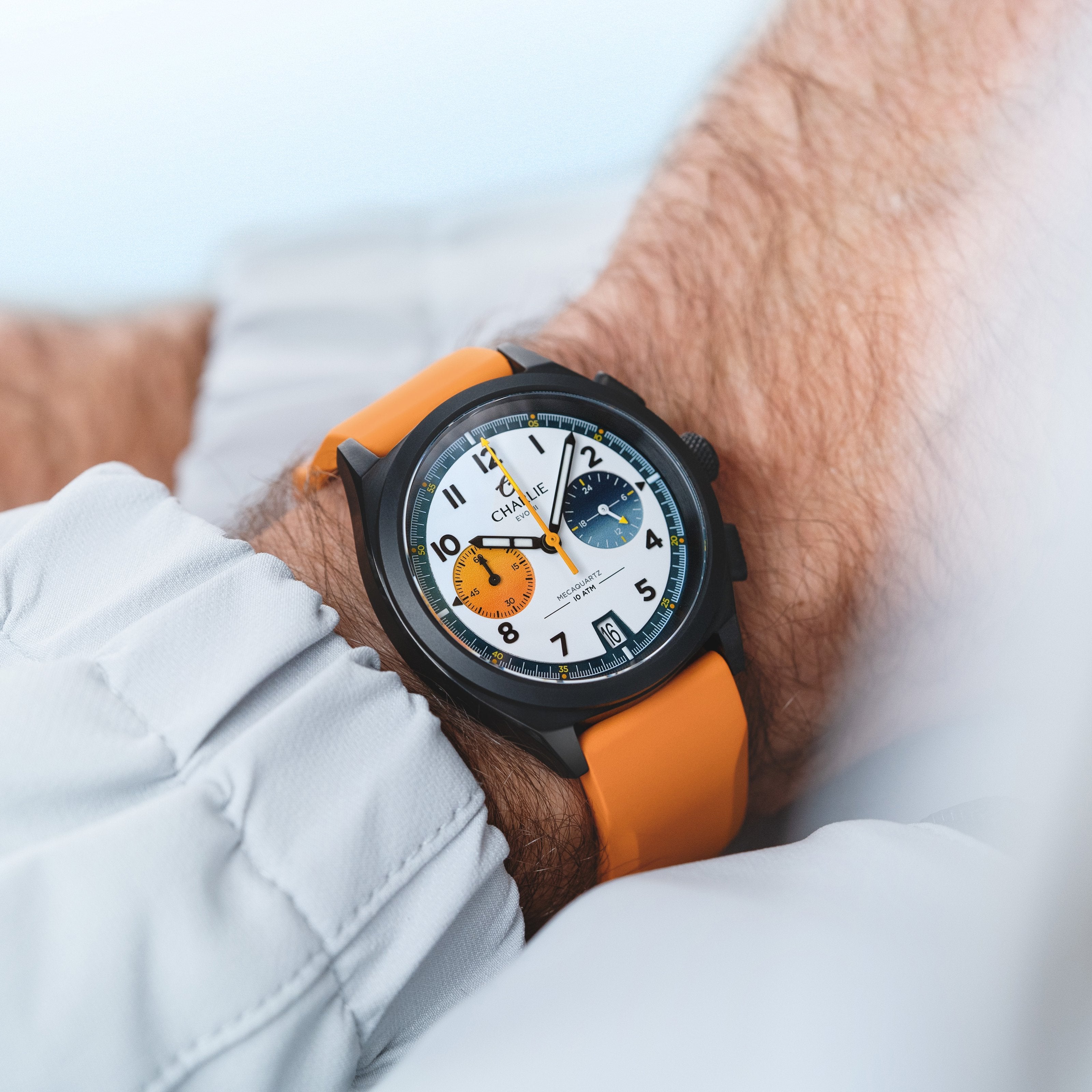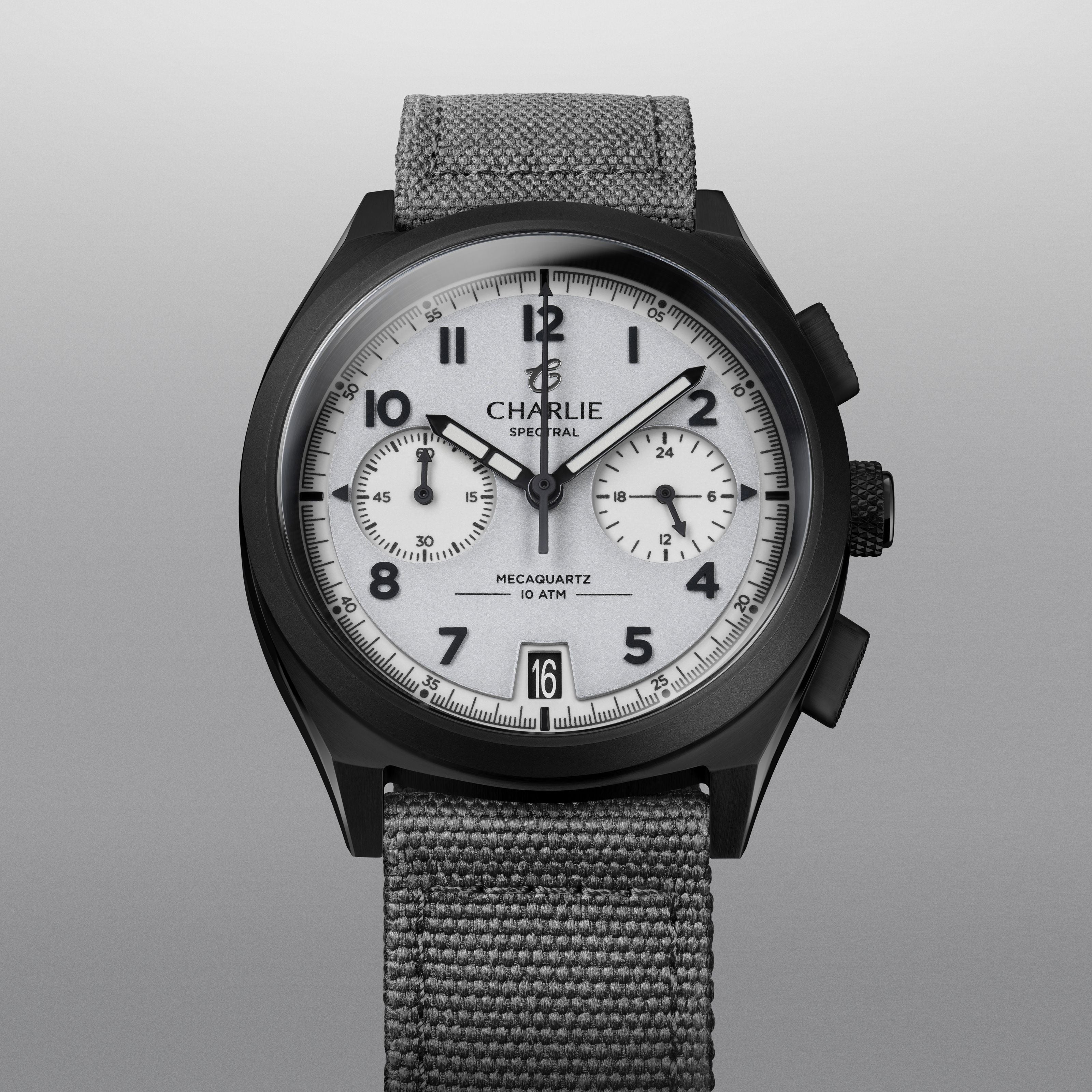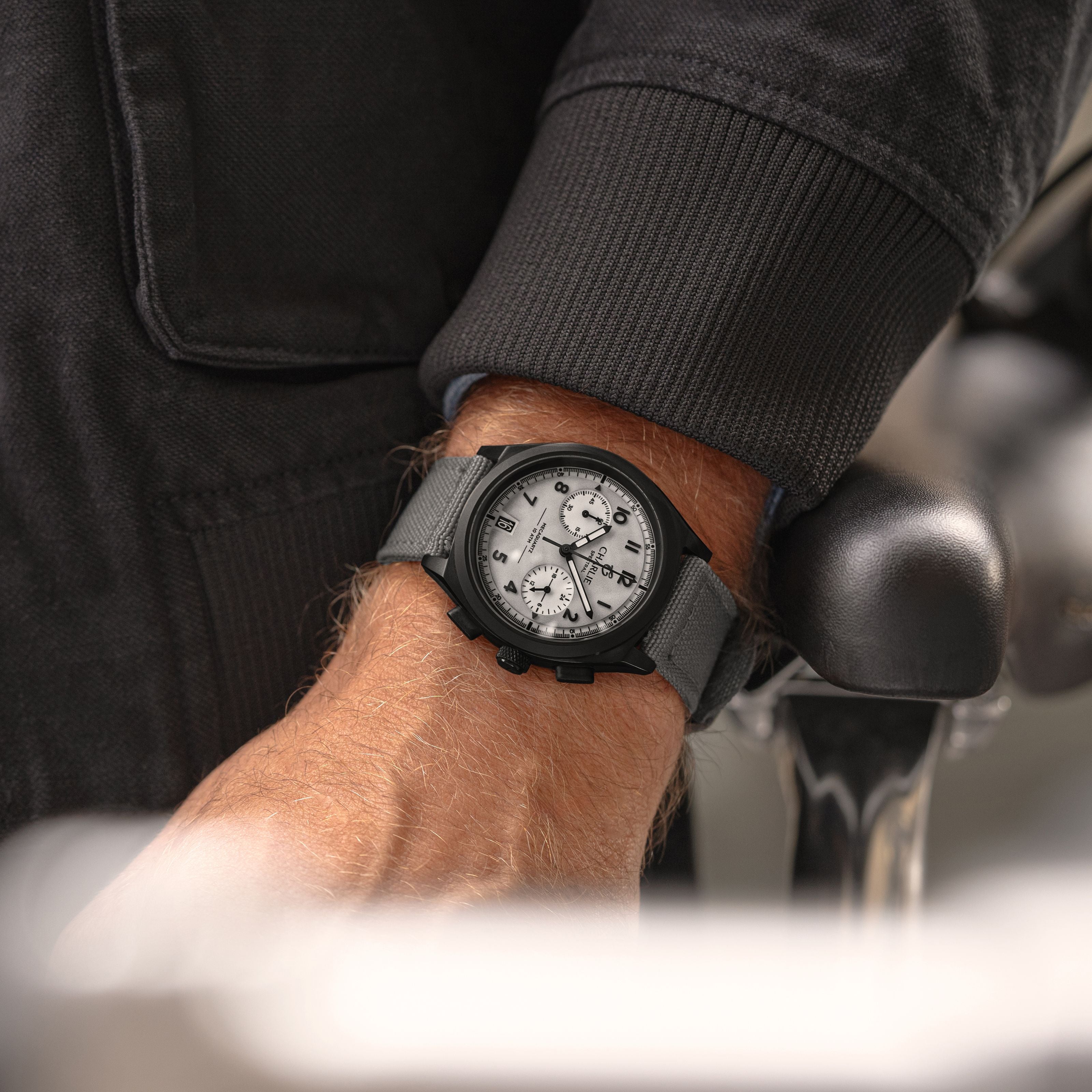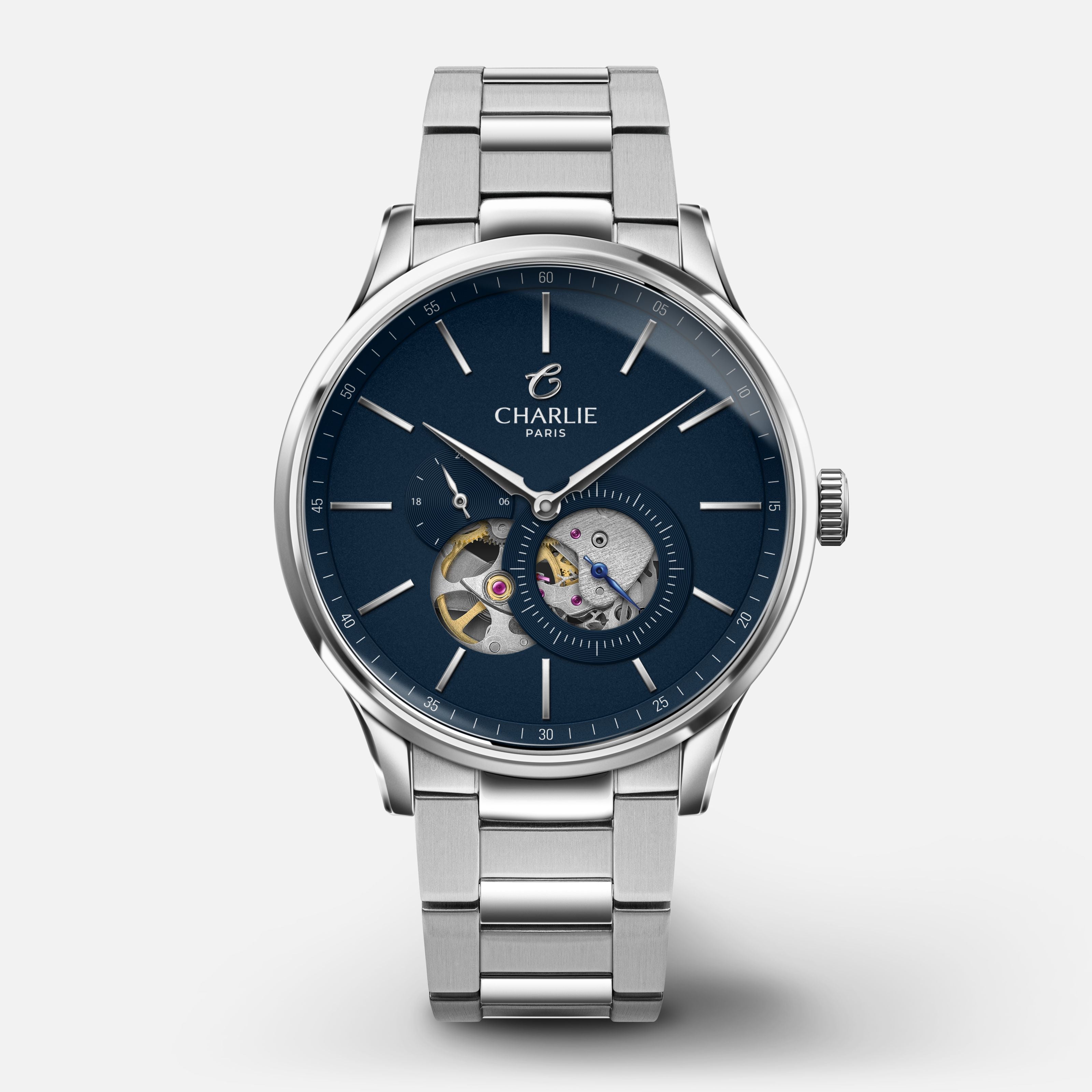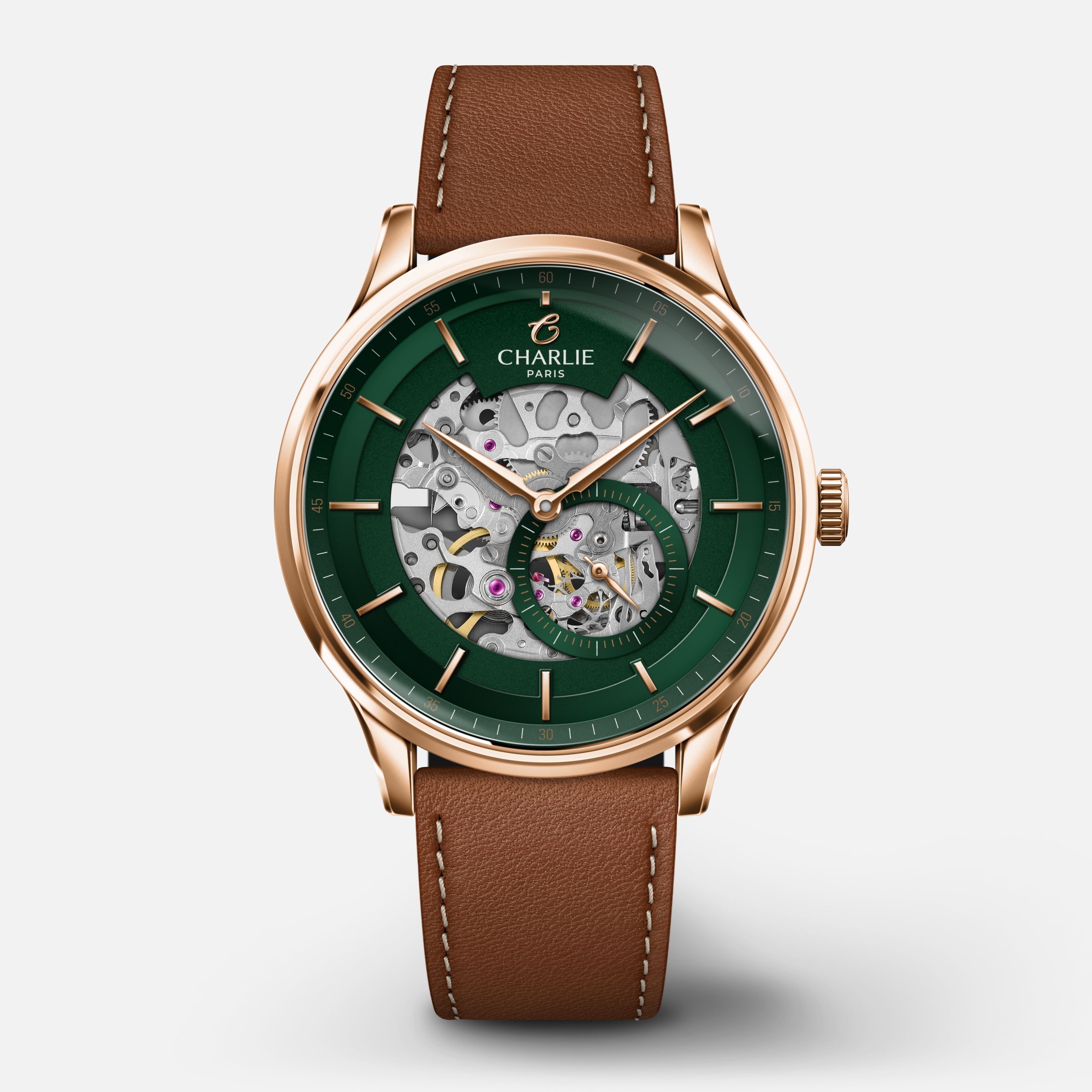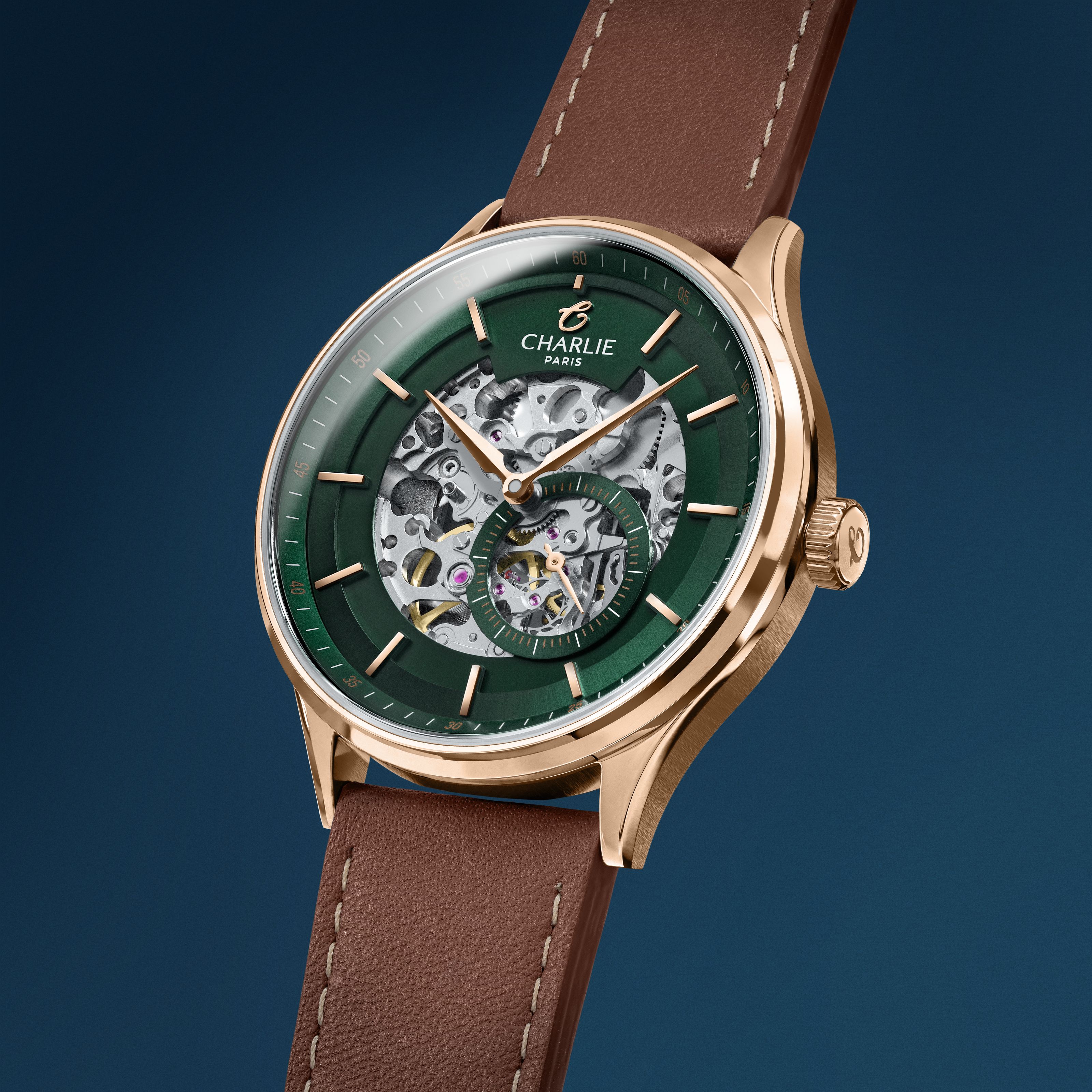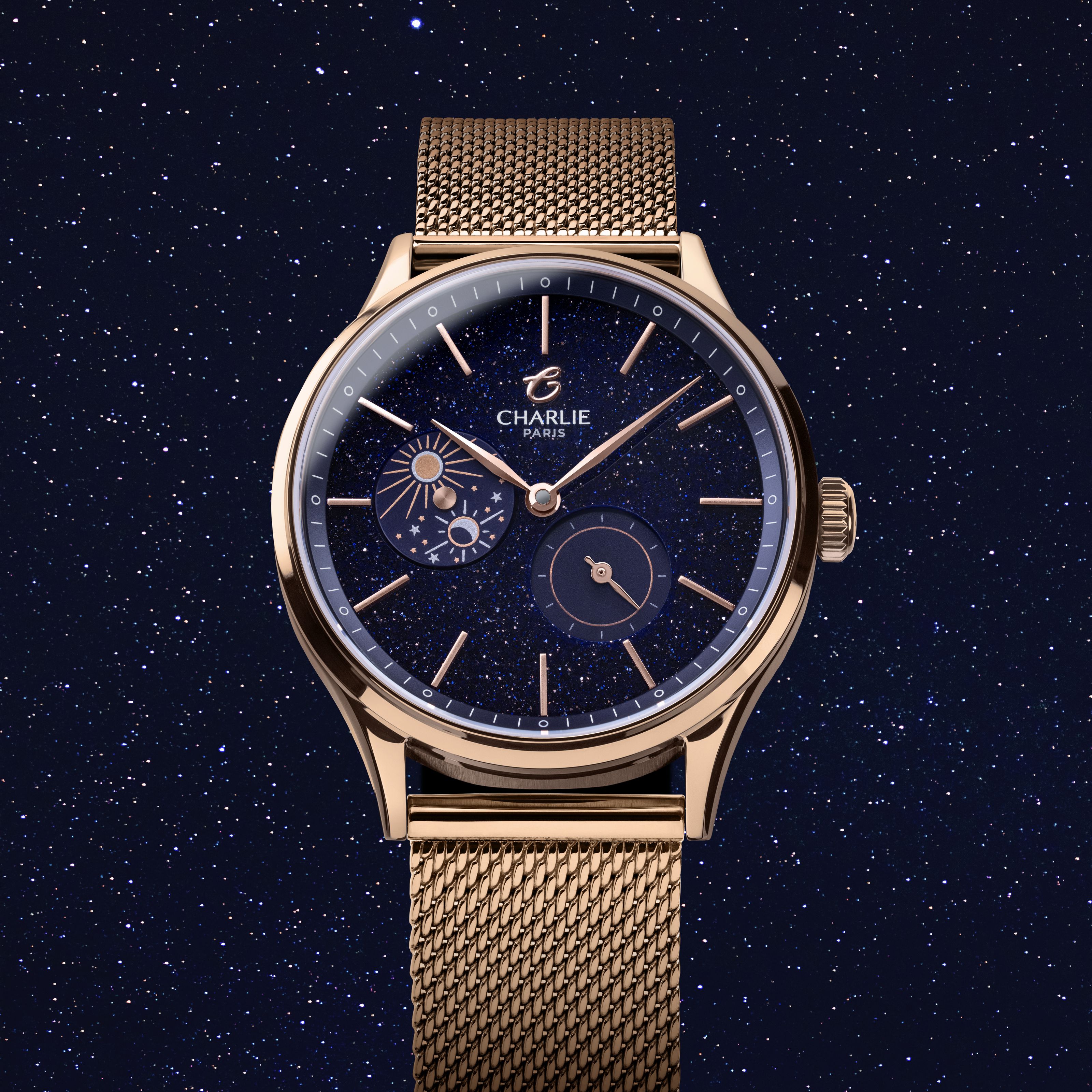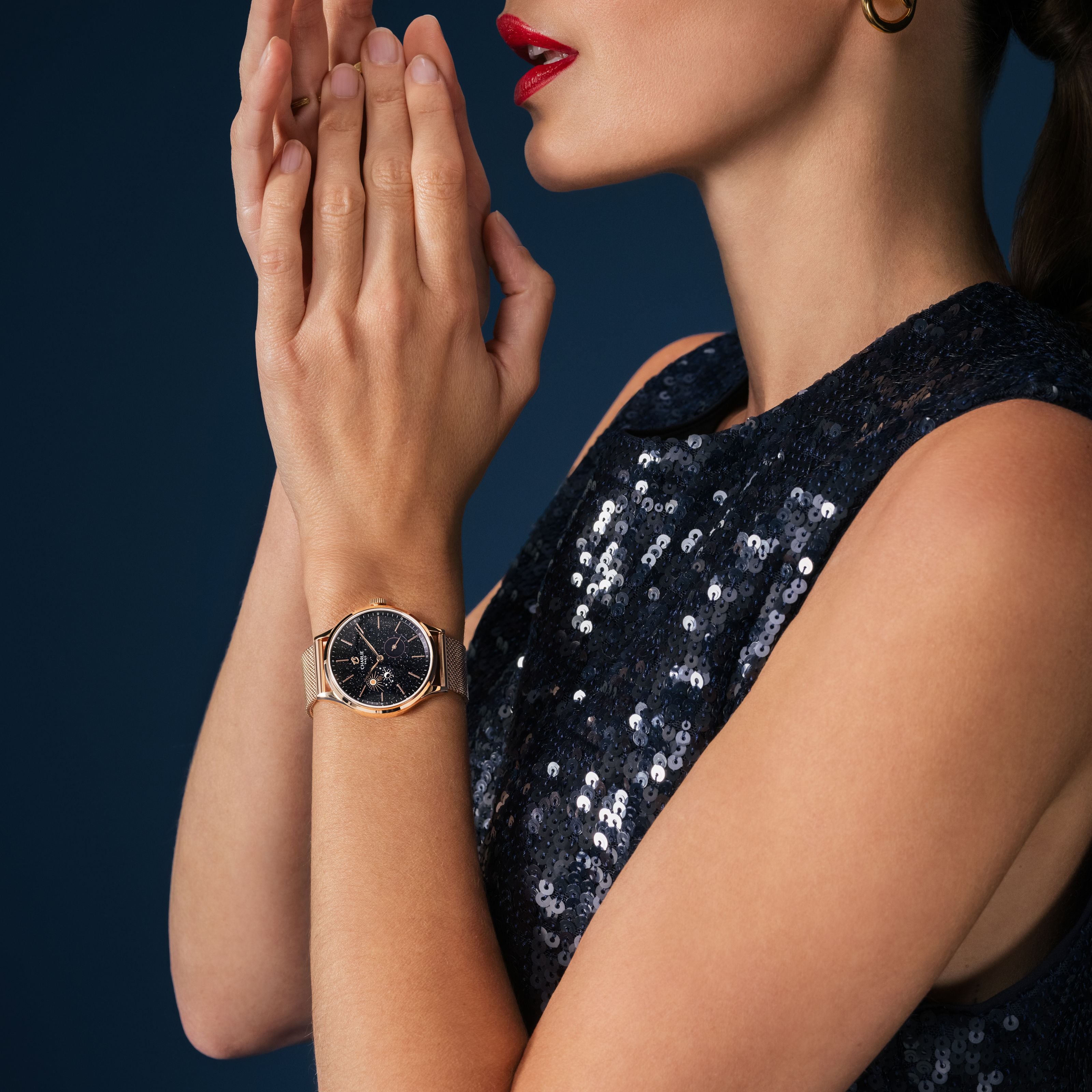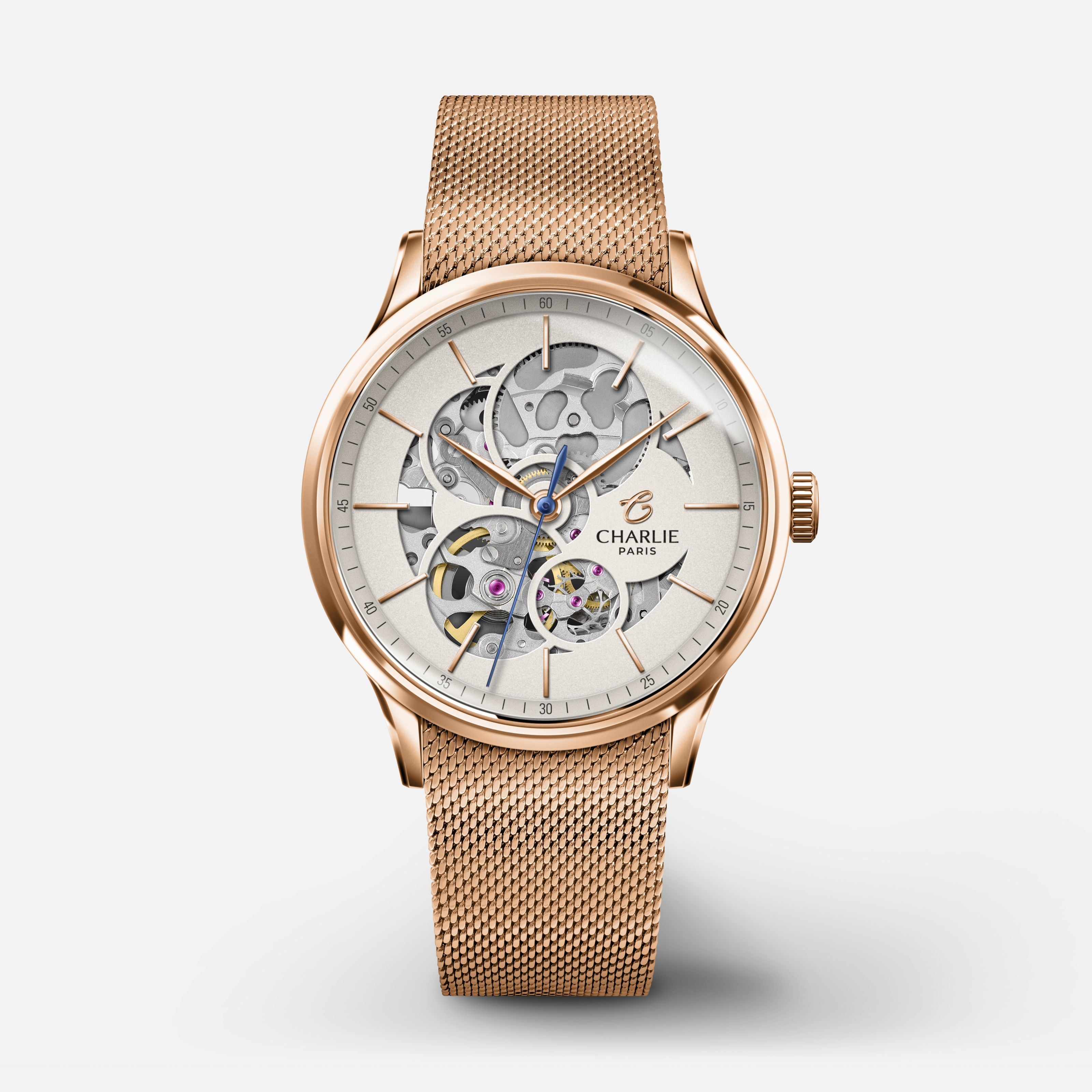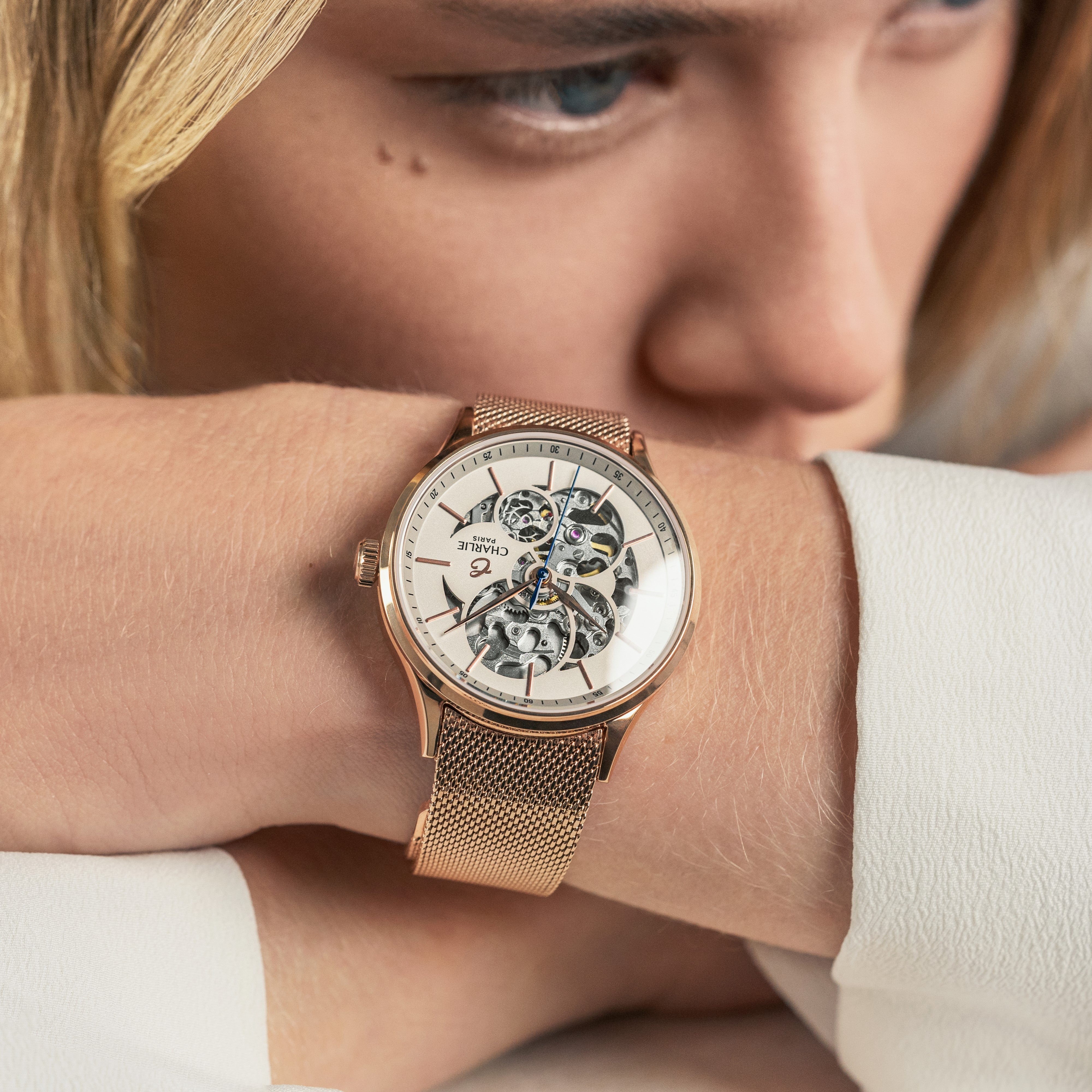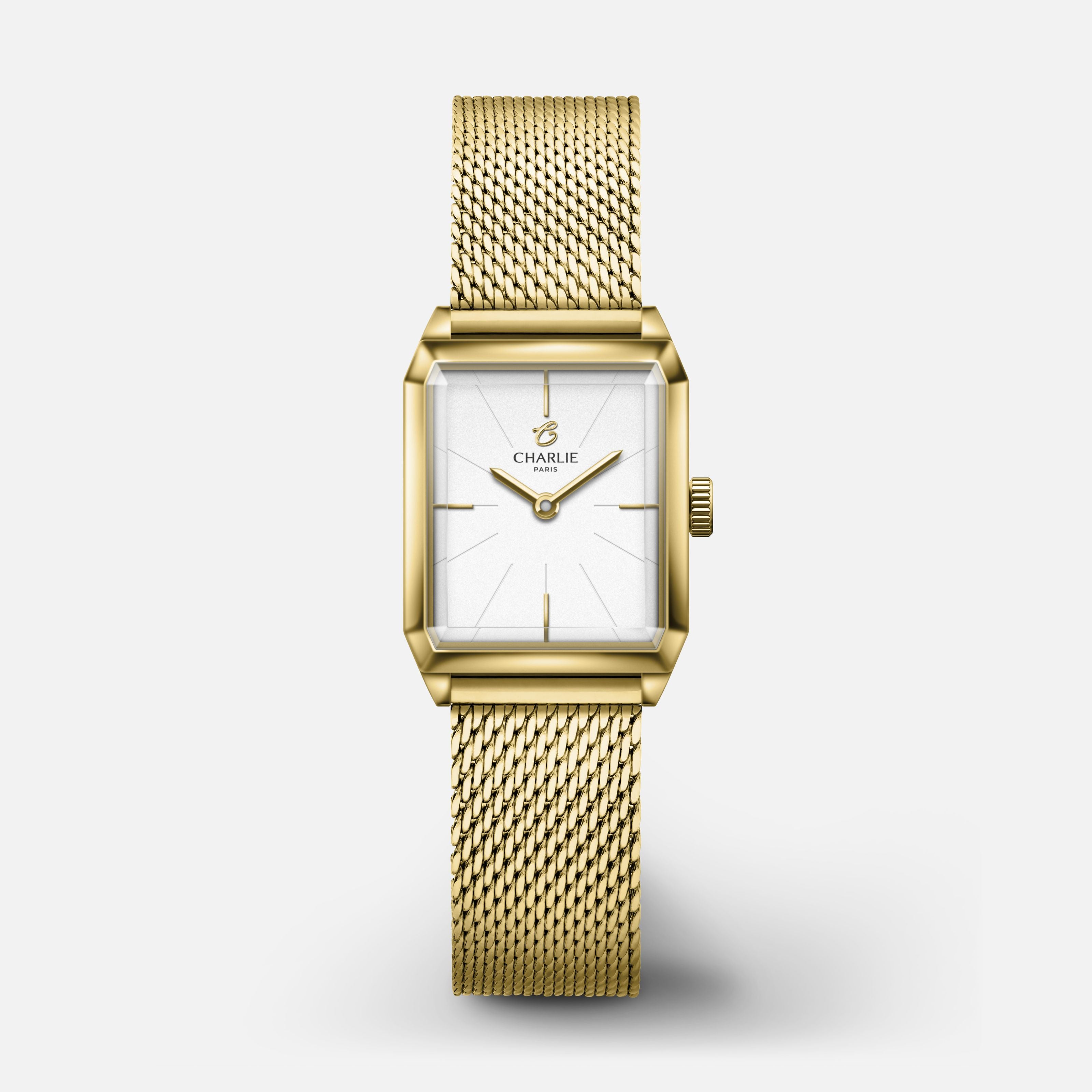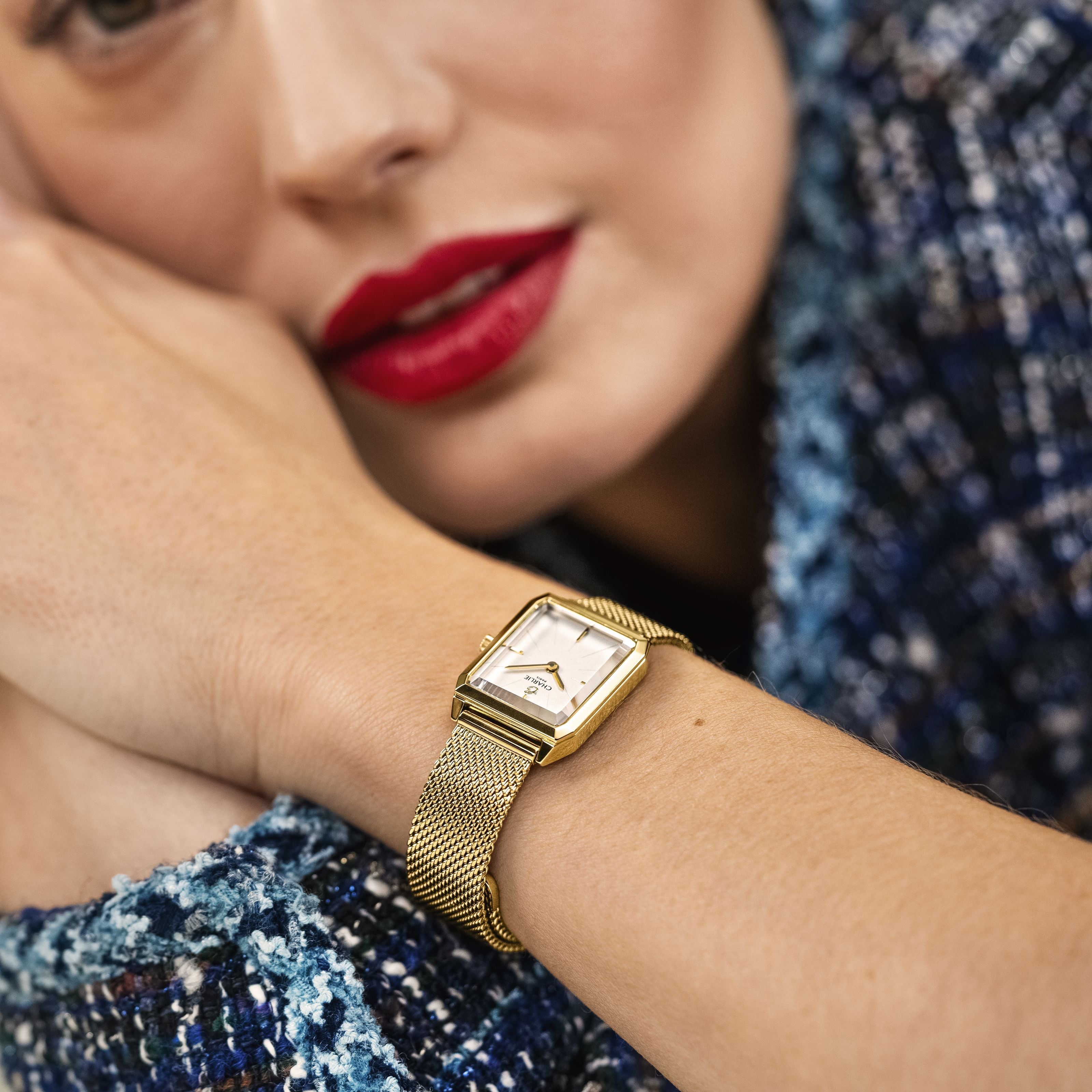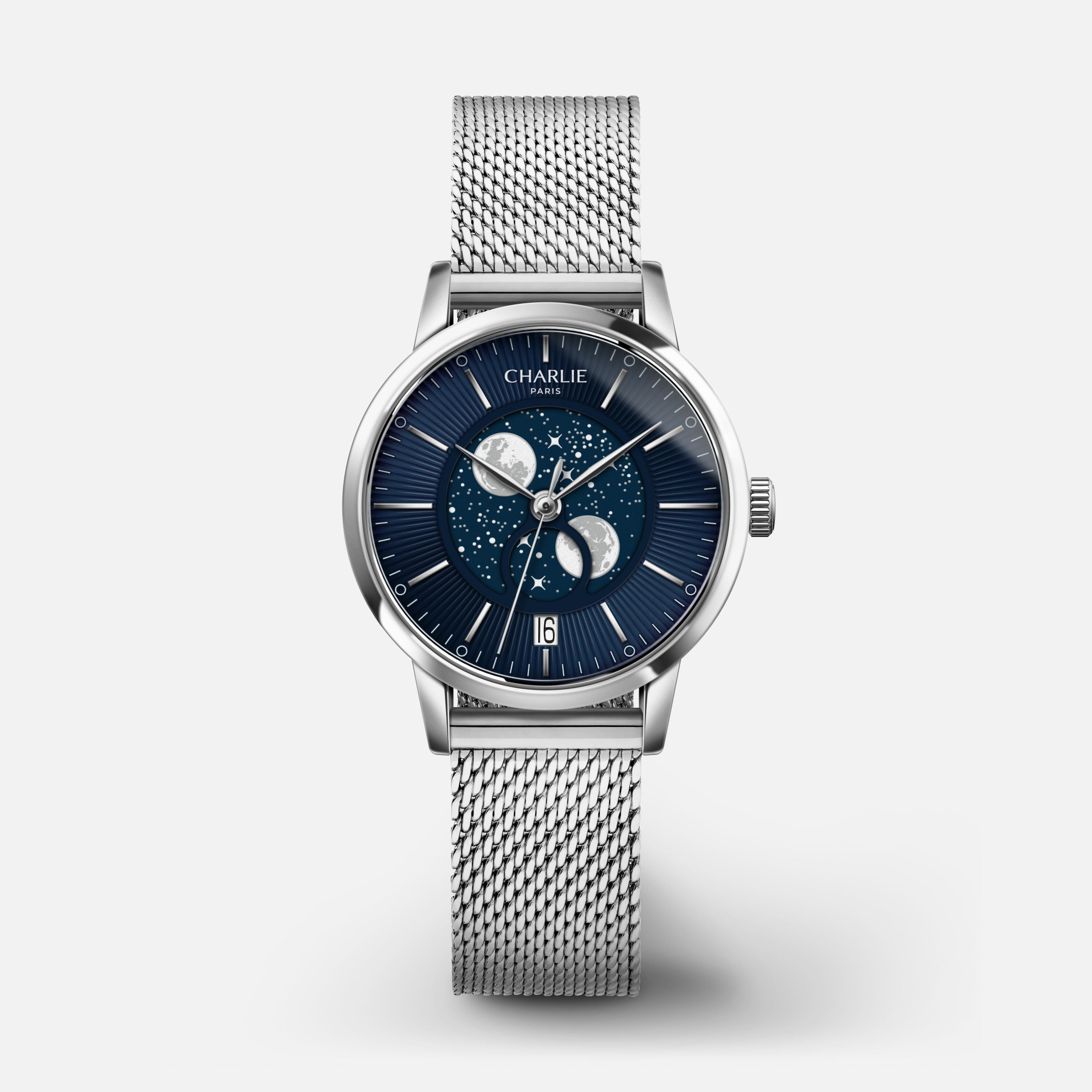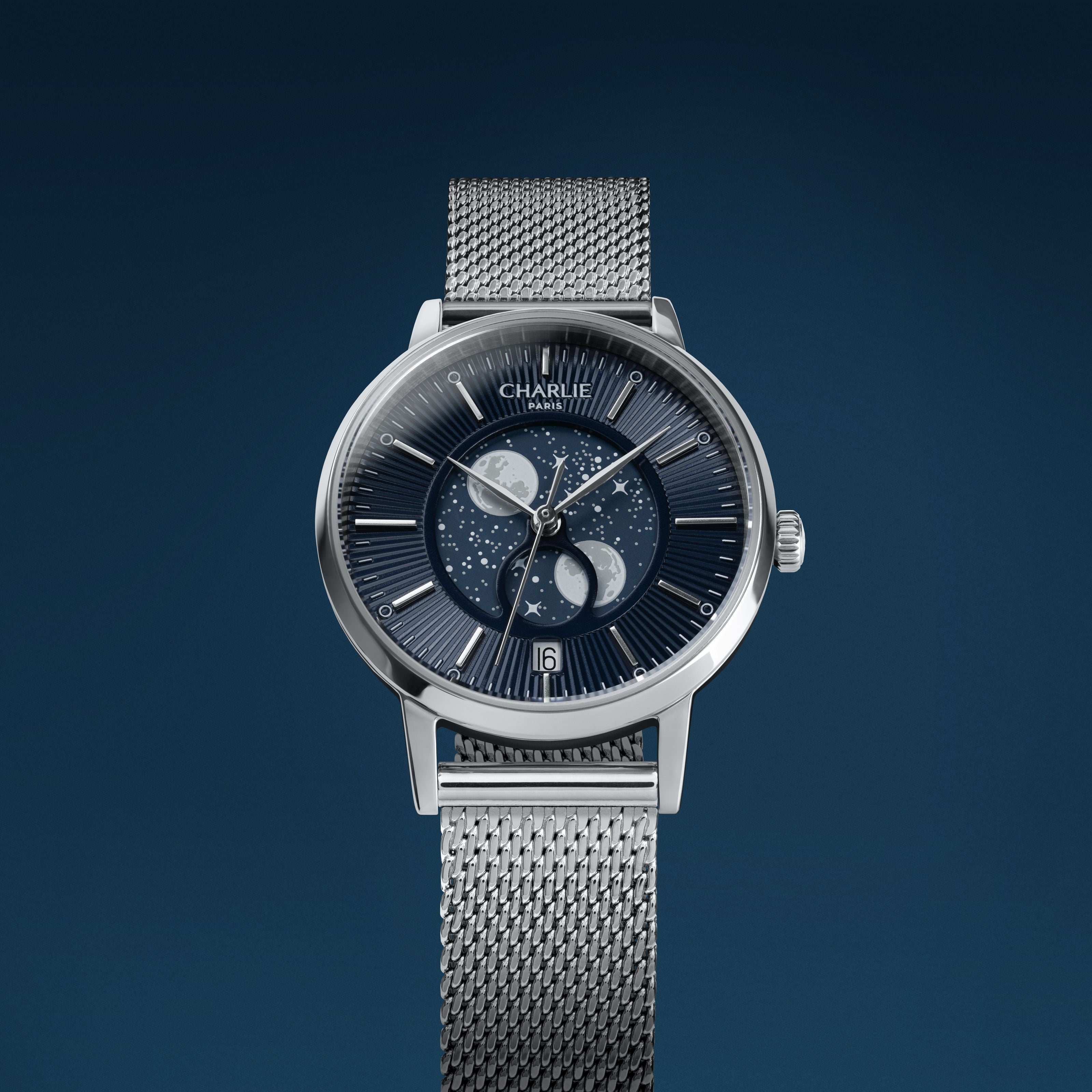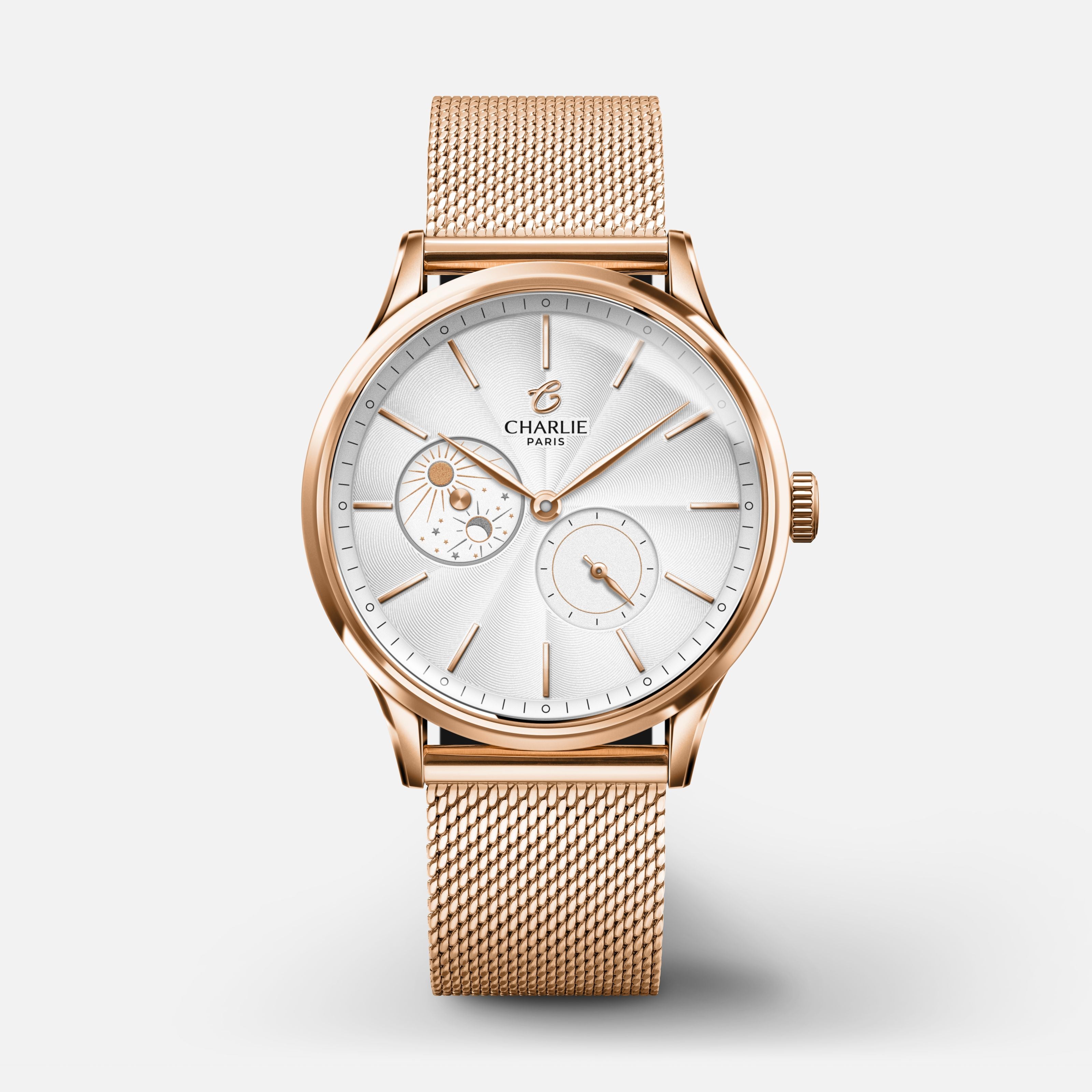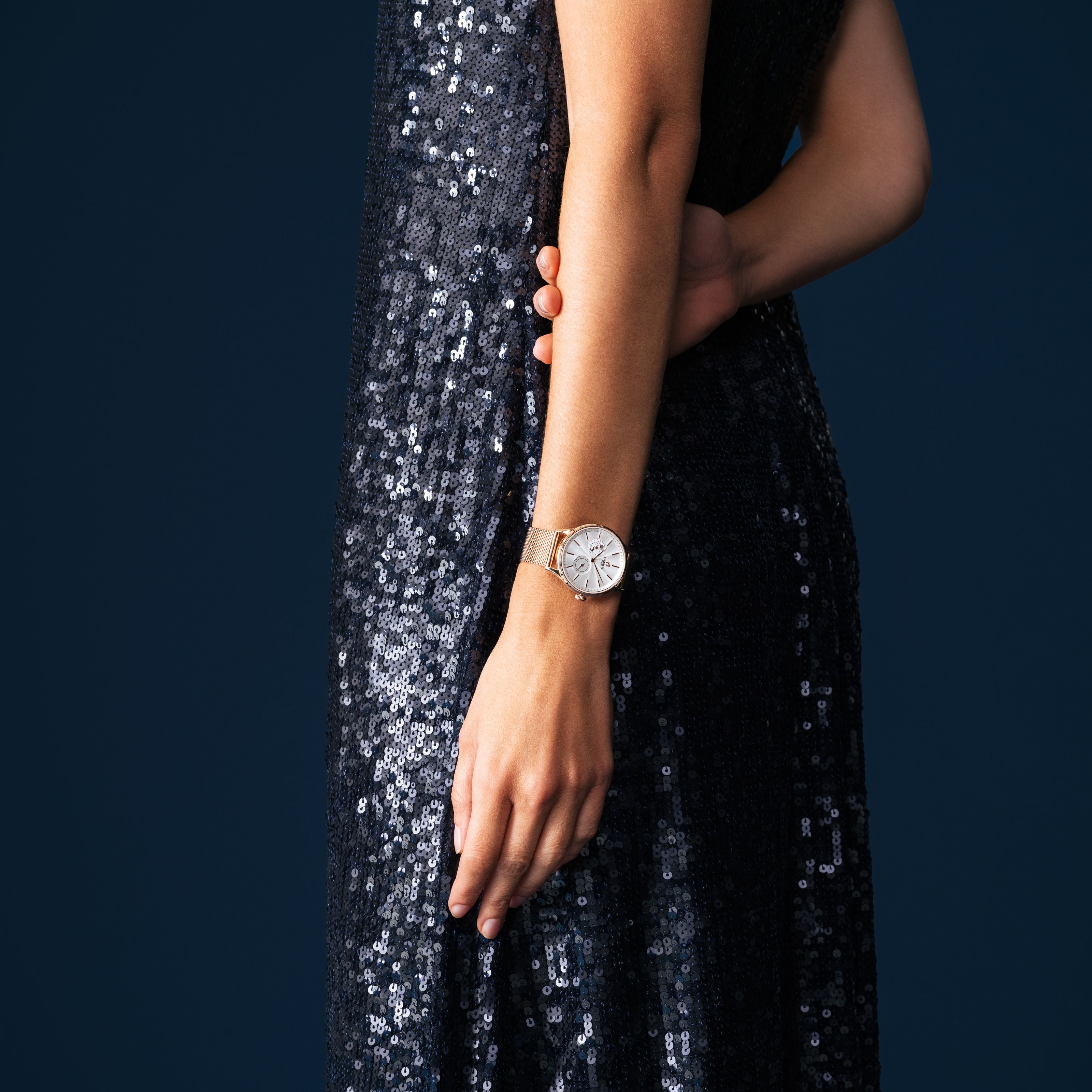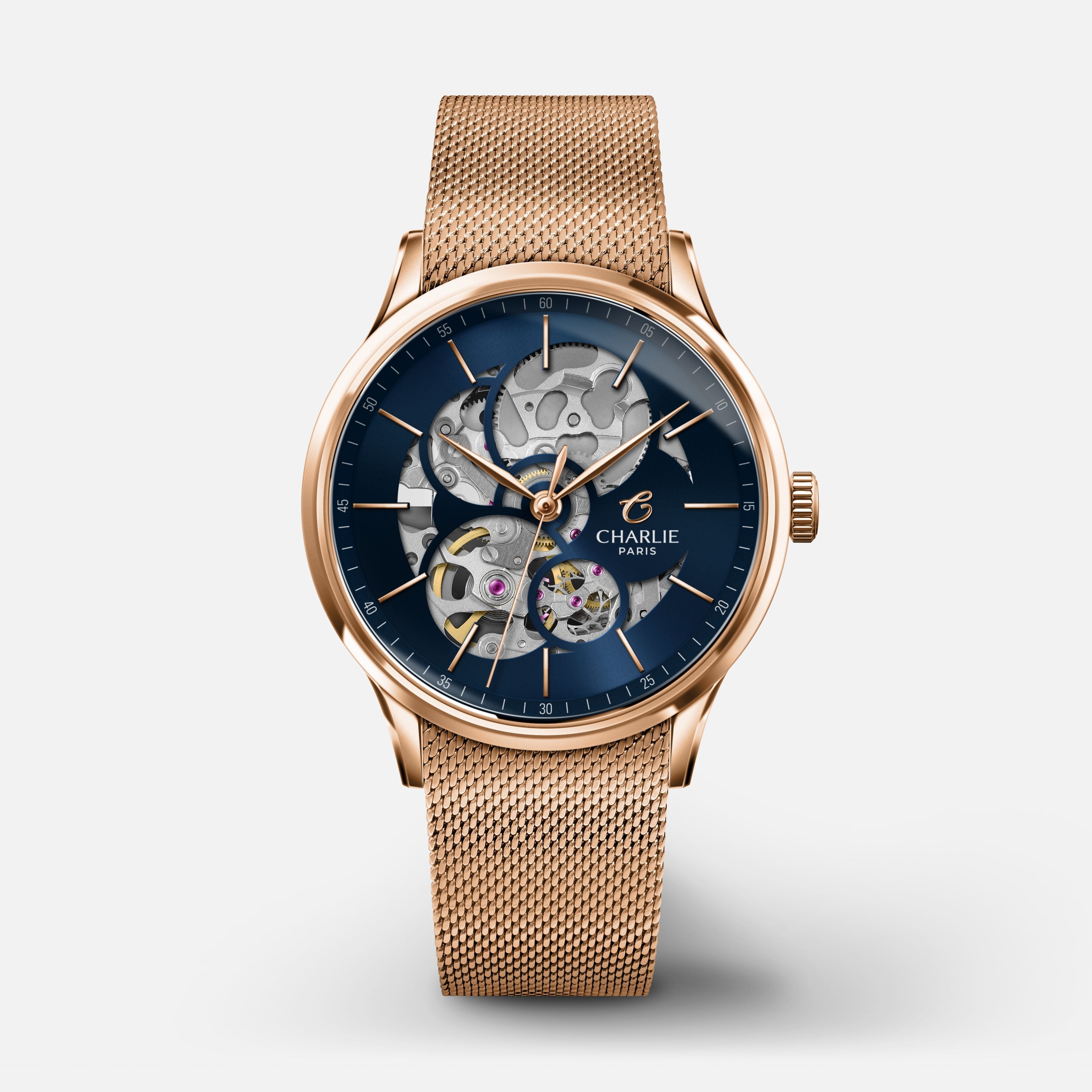The mechanical watches work thanks to the energy provided by a spring wound in a barrel and can be with manual or automatic winding. We speak then of manual mechanical watches or automatic mechanical watches. In this article, we will explain what are the specificities, the common points and the differences between a mechanical watch with manual winding and a mechanical automatic watch.
Mechanical watch: automatic winding versus manual winding
Mechanical watches are very popular with collectors who appreciate the beauty and complexity of their movement. They are watches that run solely on mechanical energy. Among them, we distinguish between watches with manual winding and those with automatic winding:
- With a manually wound mechanical watch, you will have to manually wind your watch by turning the crown of your watch. This operation should ideally be done once a day by turning the crown clockwise.
- With an automatic mechanical watch, the watch will automatically recharge itself when you wear it thanks to the energy you will create with your wrist. However, these watches usually have a power reserve of 40 hours when not worn. When they are stopped, it is possible to wind them manually by means of the crown.
The components of a mechanical watch
To fully understand how a mechanical watch works, whether it is manually wound or automatic, you must first learn about its main components. Here are the main components of an automatic or manual mechanical watch:
- The crown: This is the small wheel located on the right side of your watch. It is attached to the winding shaft and is used to wind the mainspring.
- The mainspring: This is an elastic steel band that provides the energy for the movement when it is wound, i.e. tensioned.
- The transmission system (gear train): It transmits the energy accumulated in the mainspring to the escape wheel via a series of small wheels.
- Escapement wheel: its function is to let the energy transmitted by the cogs escape to the anchor, intermittently and regularly. It is the maintenance organ of the watch.
- The balance wheel: This is the heart of the movement. It beats between 5 and 10 times per second in a circular motion. It is the source of the "ticking" sound produced by the pallets on the escapement wheel teeth, due to its back and forth movement. It is the regulating organ of the movement.
- Rubies: These are very hard stones that reduce friction and wear of the mechanism components.
- The rotor: In plain English, it is a semi-circular weight attached to the movement. It turns 360° according to the movements of the wrist and allows to "retension" the barrel spring thus providing mechanical energy to the watch. Thus, if a mechanical watch does not include a self-winding mechanism, it does not include a rotor. The barrel spring is "wound" or retensioned manually with the crown.
How a mechanical watch works
Now that you are familiar with the main components of the mechanical movement, we will explain how they work.
Here are the six main steps to better understand how the hands of your mechanical watch tell the time:
- If it's an automatic watch: Wrist movements turn the rotor and thus wind the barrel spring. If it is a non-automatic mechanical watch, the winding is done by turning the crown;
- The transmission system transfers the energy to the escapement wheel;
- The escapement doses the energy in regular sections;
- The balance wheel uses this regular energy to beat back and forth constantly;
- With each series of beats, a series of wheels transfer the energy to the hands of the watch;
- The hands move forward on the dial.
An automatic watch has a nice aesthetic advantage. Indeed, the seconds hand does not jump one second but many more small jumps. The whole thing is more fluid and aesthetic. Now that you are relentless about mechanical watches and mechanical automatic watches, you can discover our men's automatic watches, and our women's automatic watches.
Read more
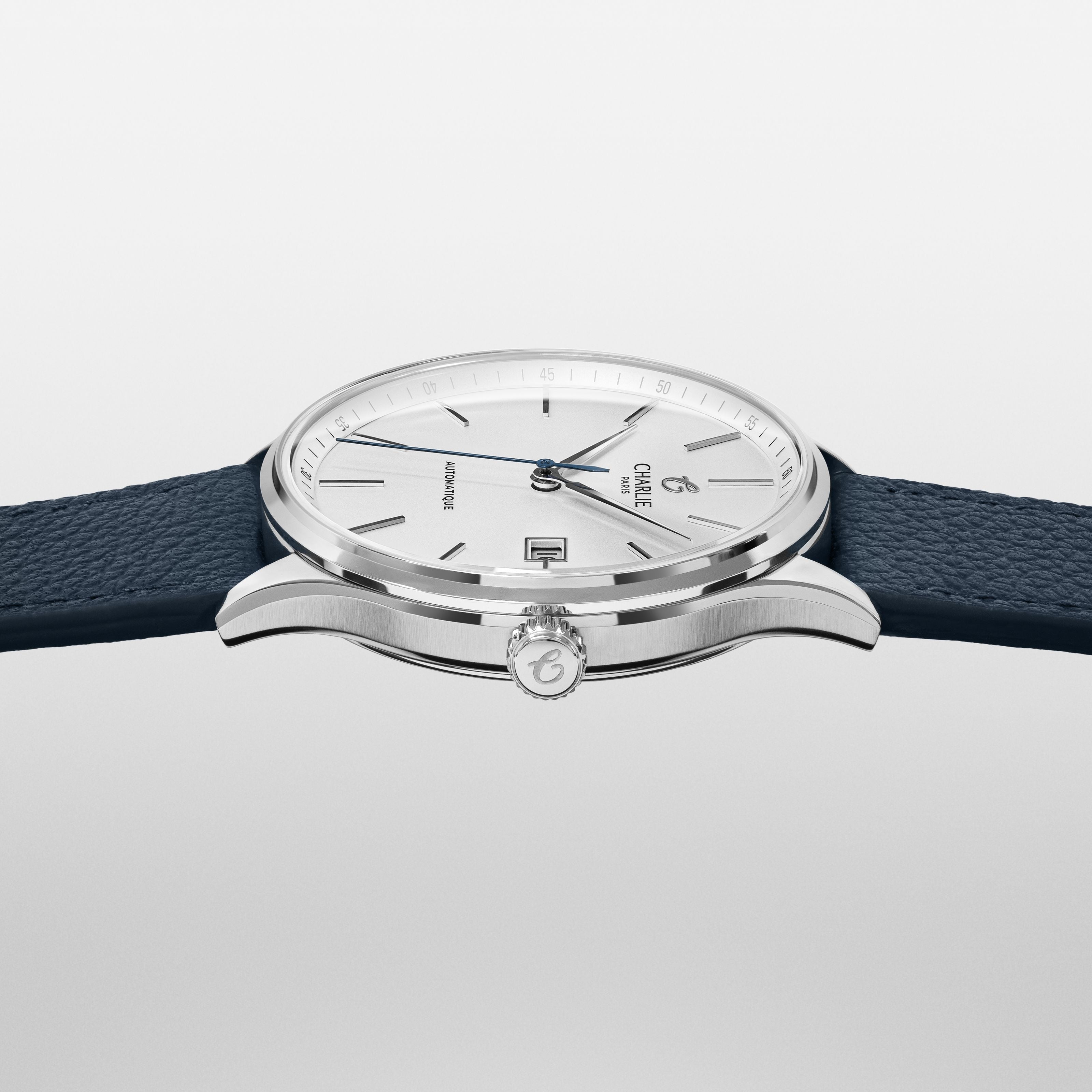
Considered a symbol of elegance and watchmaking mastery, the fine watch fascinates with its refined appearance and technical ingenuity.
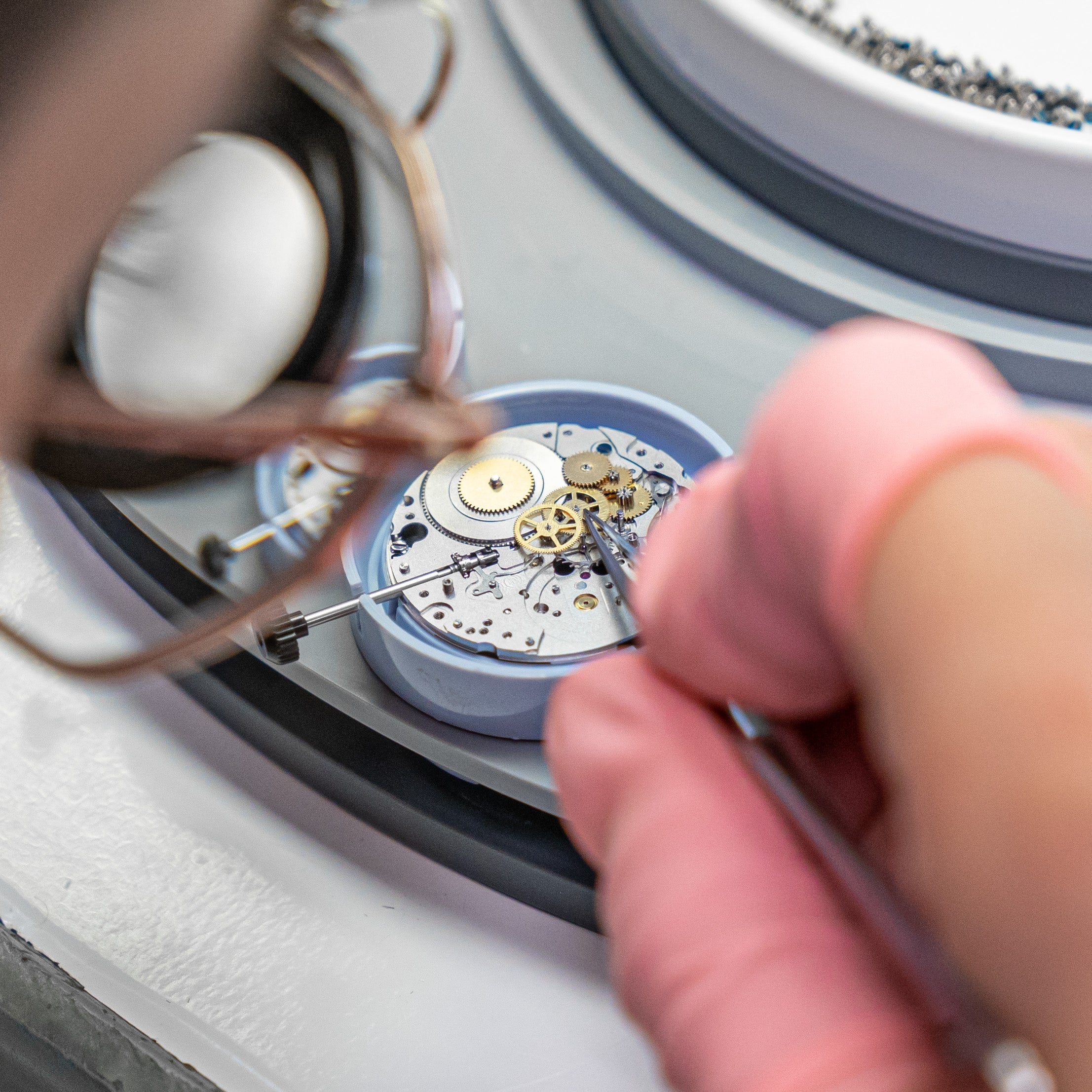
In this article, we invite you to discover one of the partners of Maison Charlie Paris: Humbert Droz Réparalux. The Humbert Droz company is a real family story. Since 1956, four generations of e...


